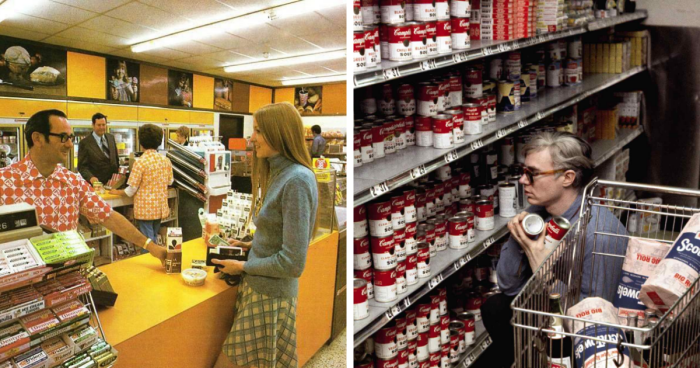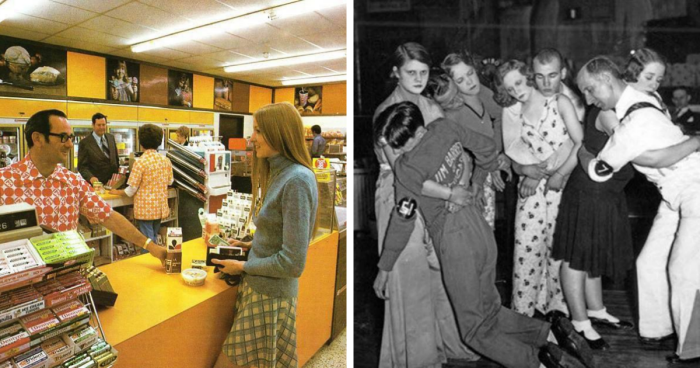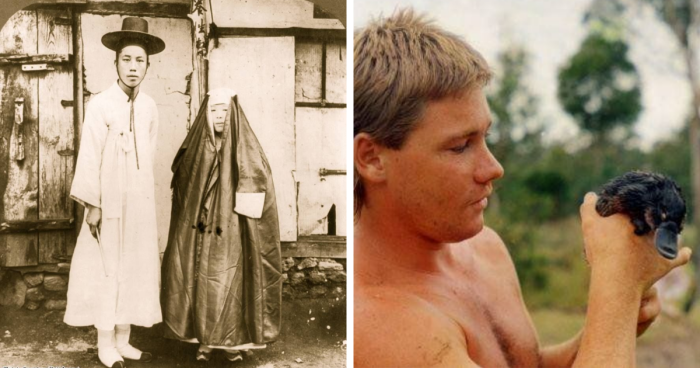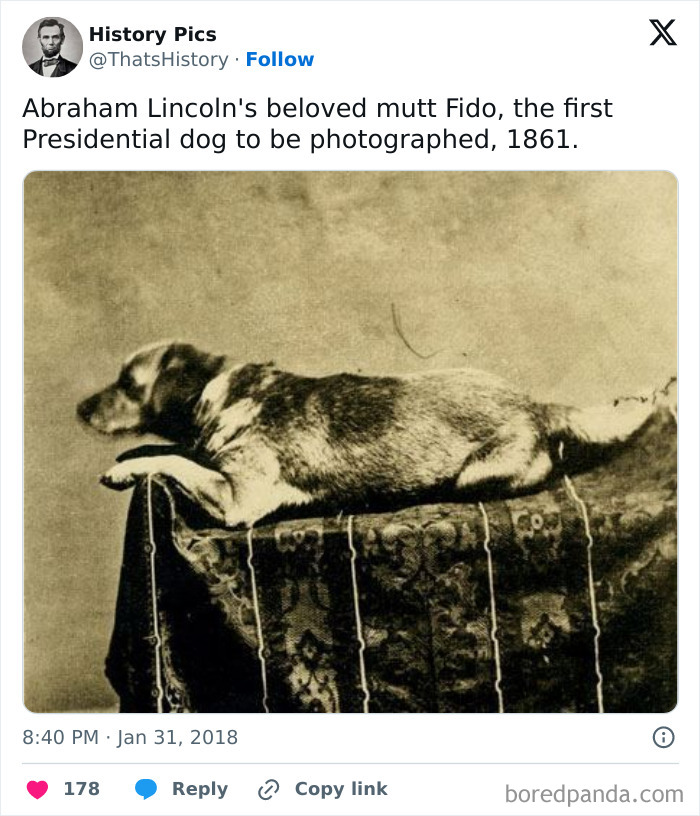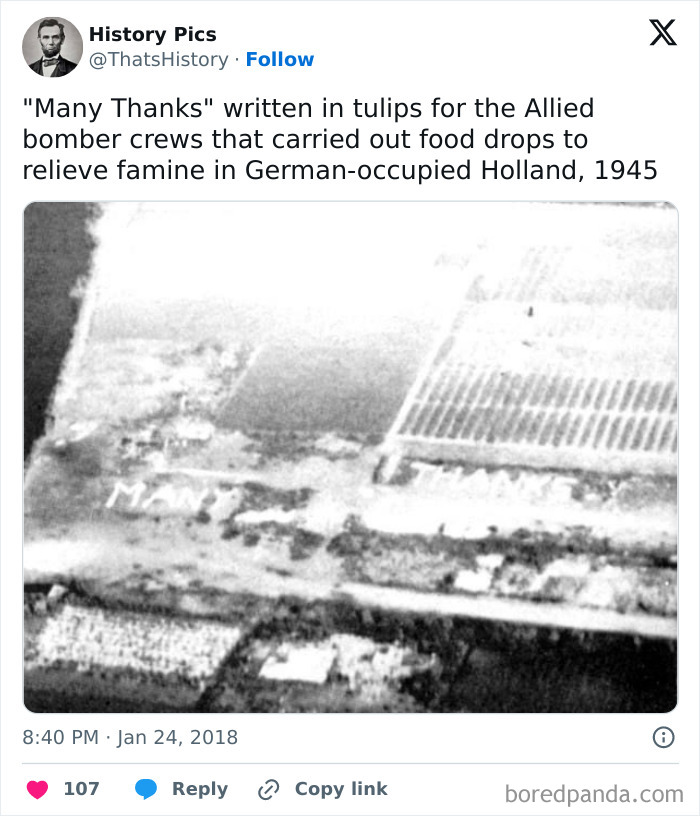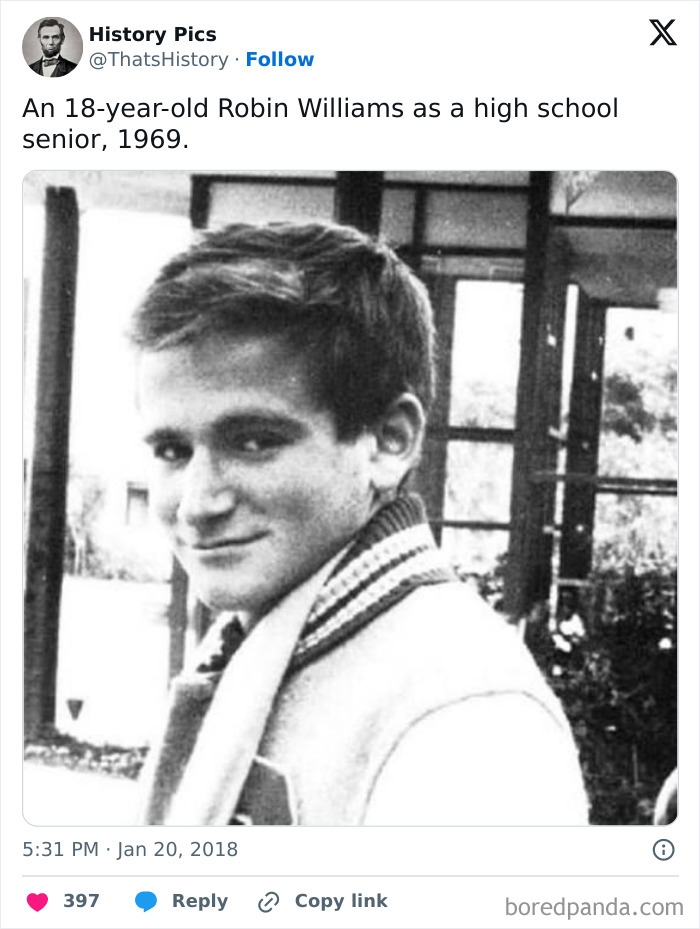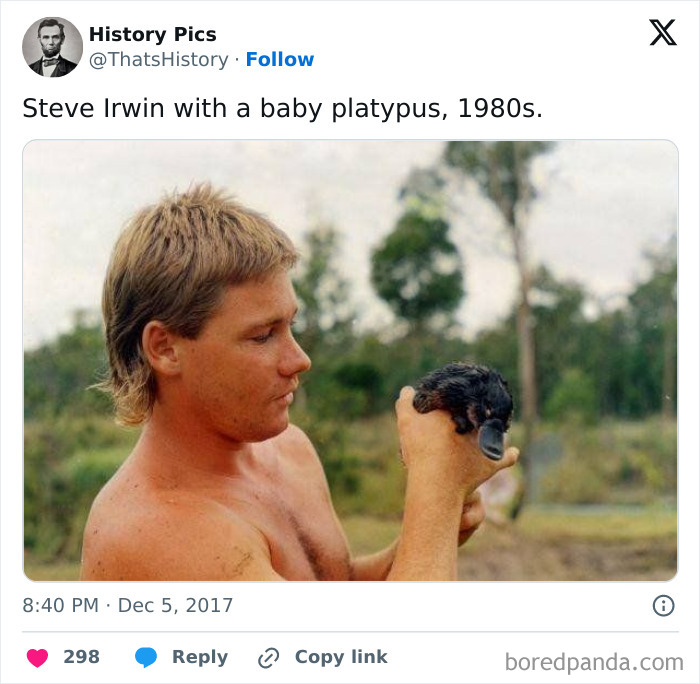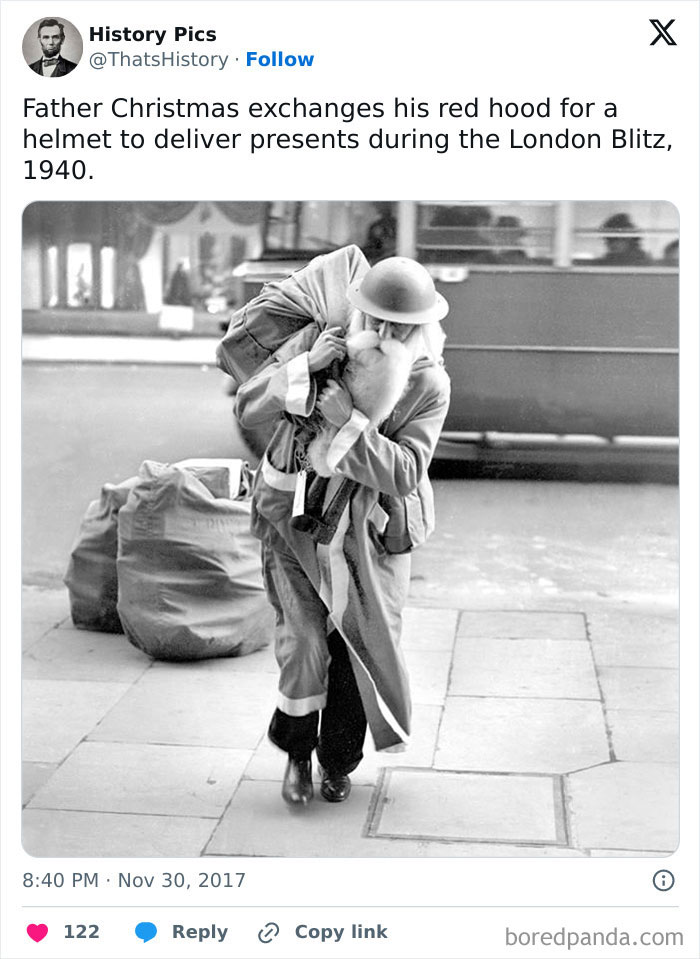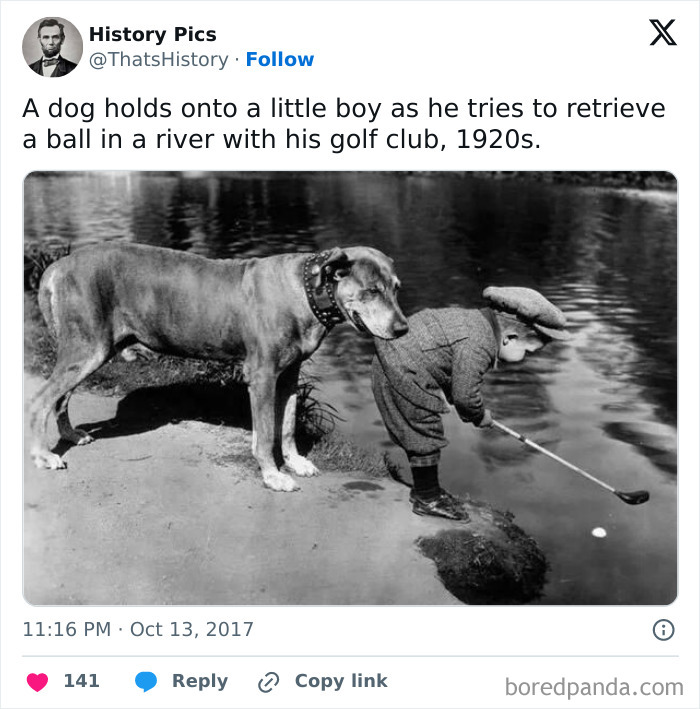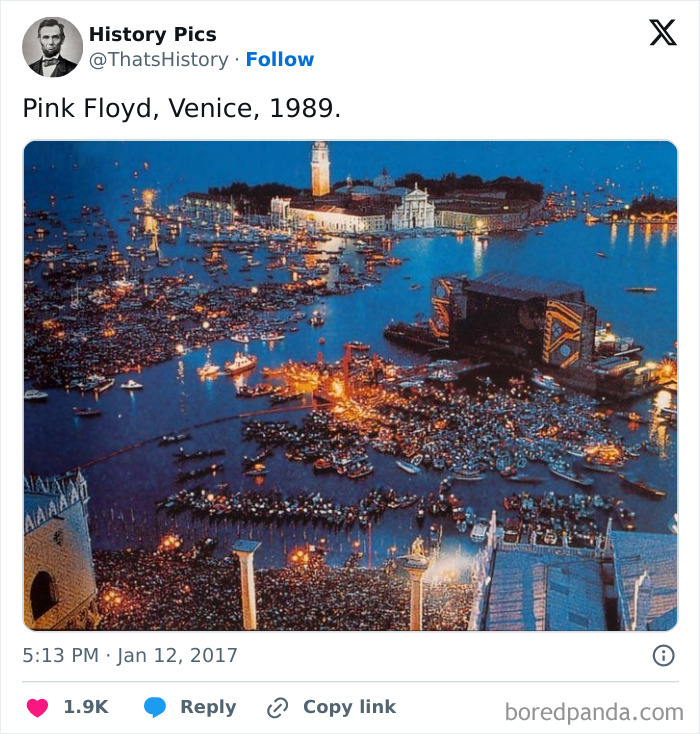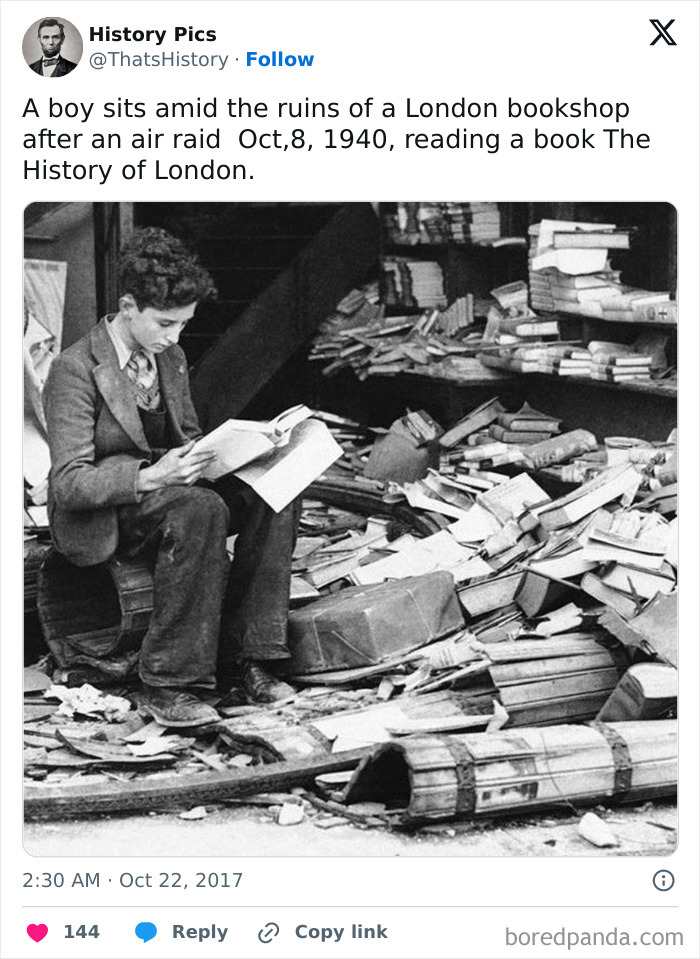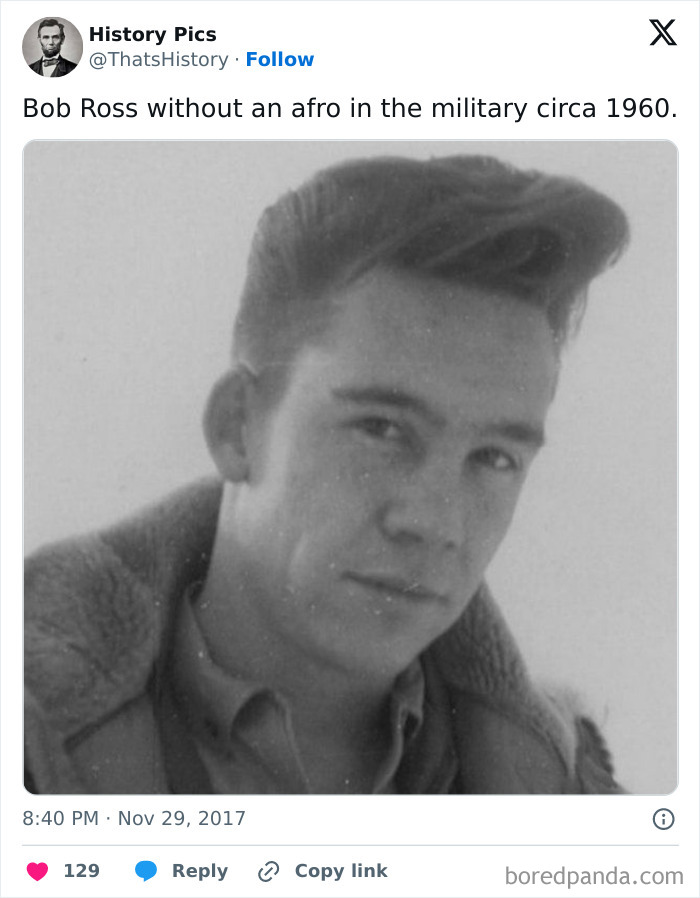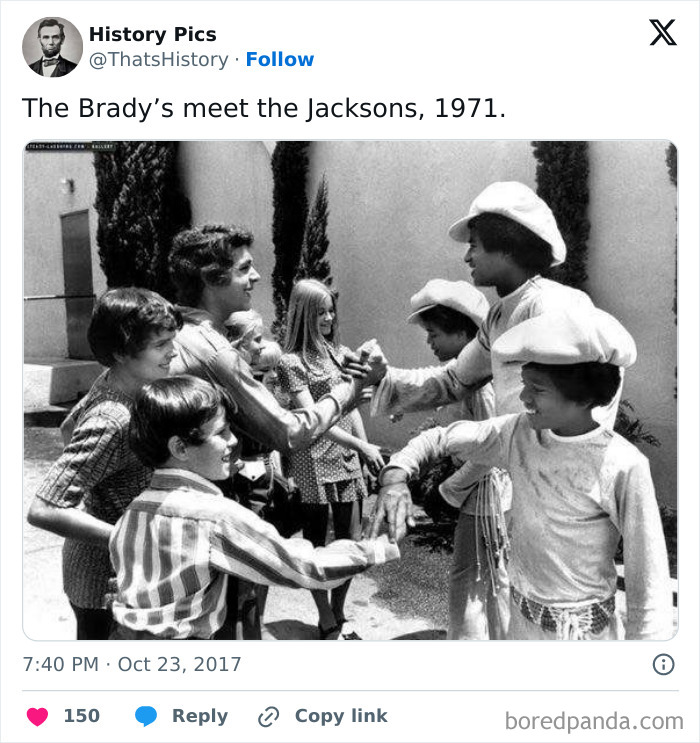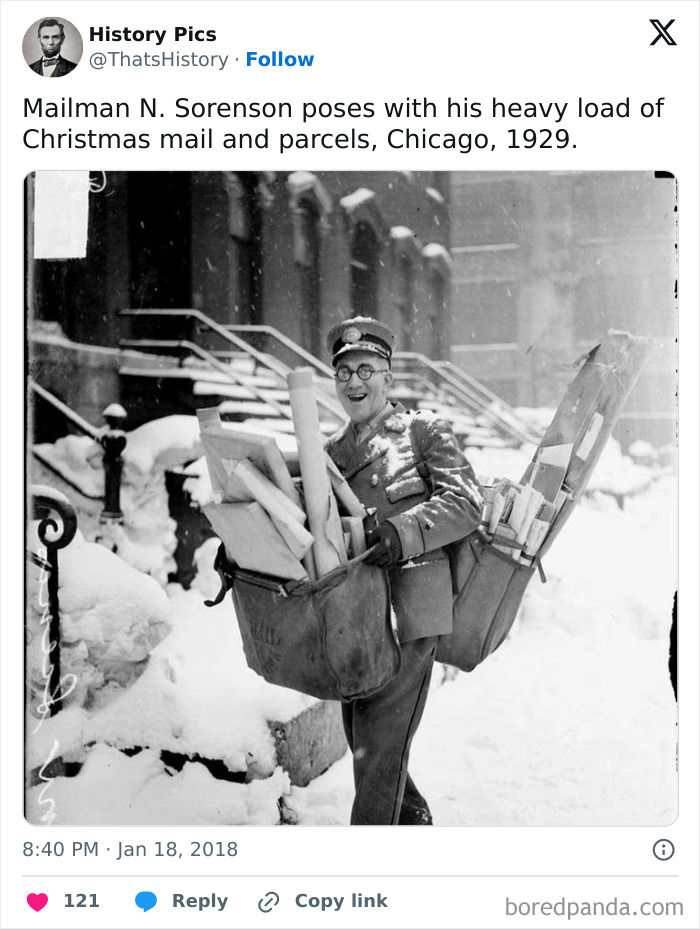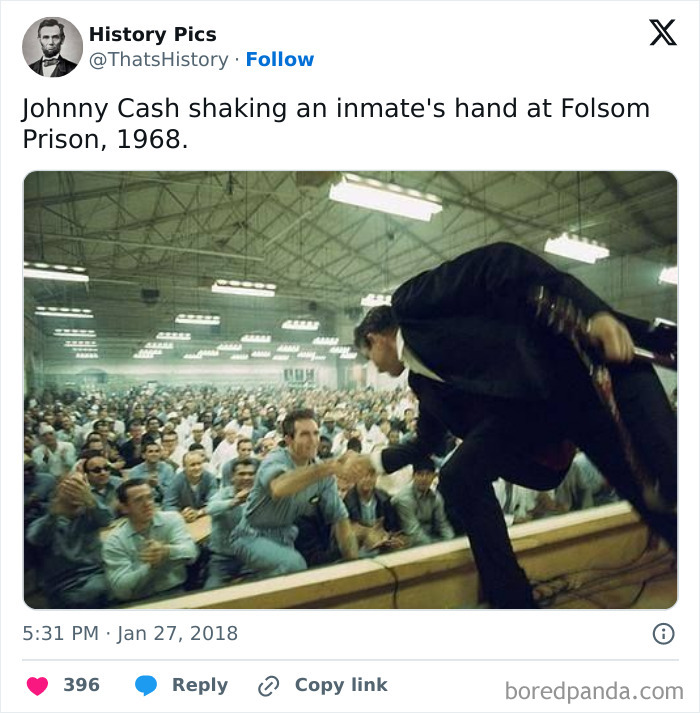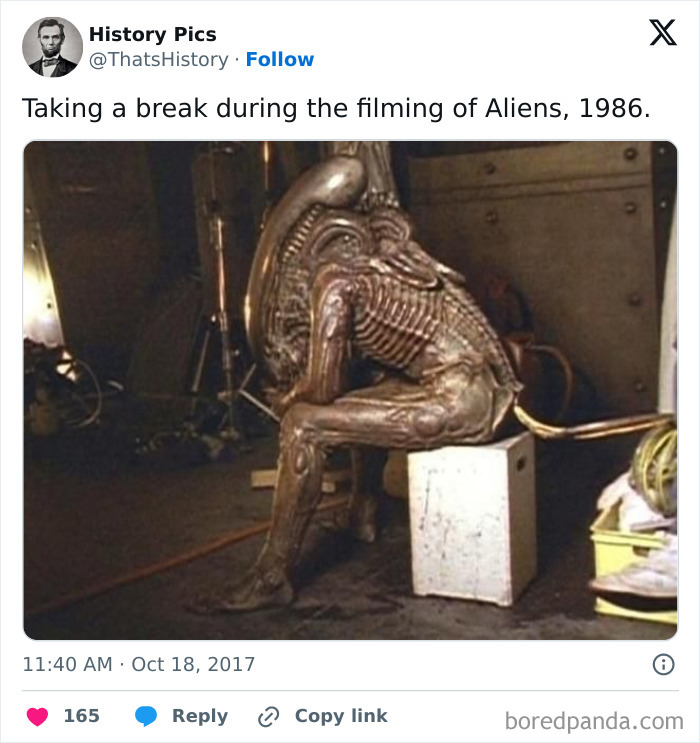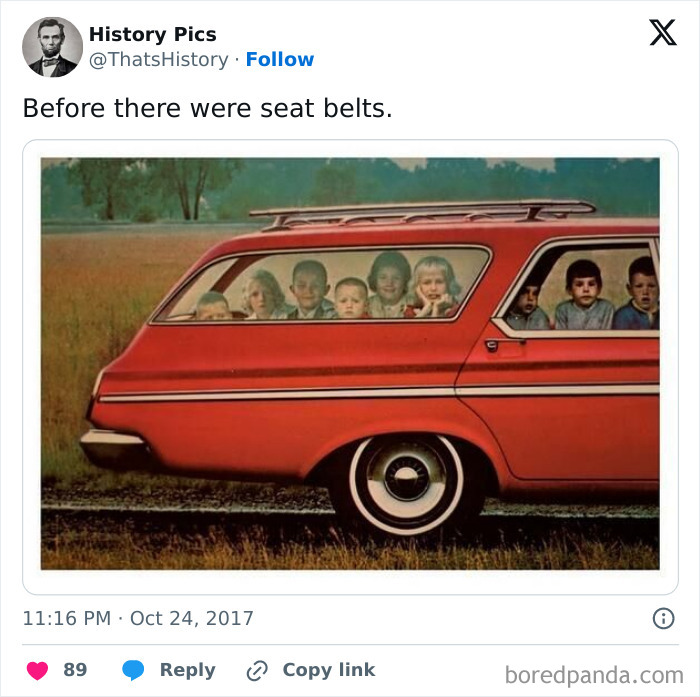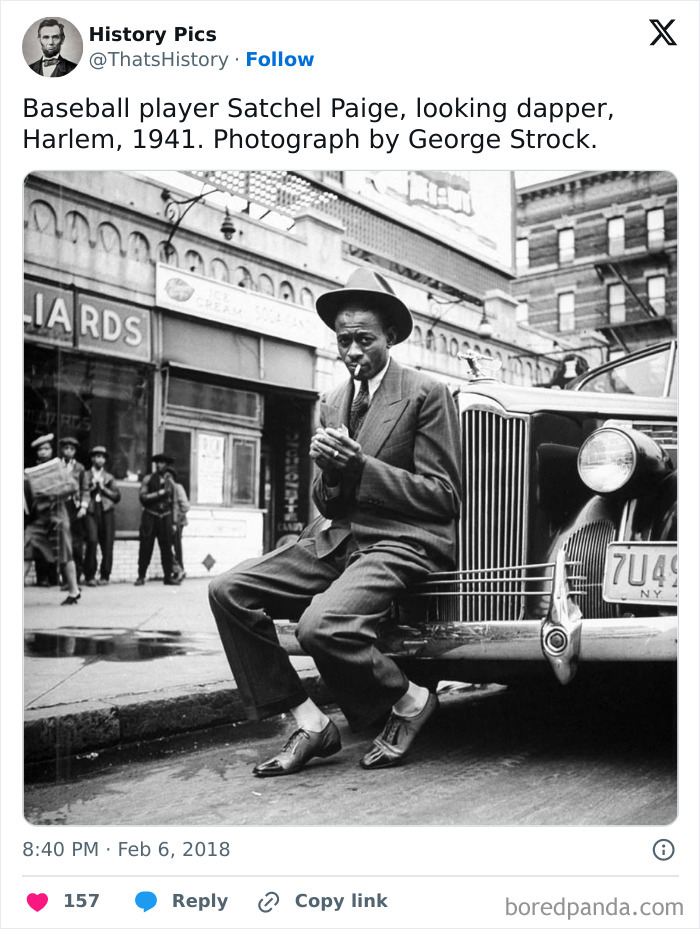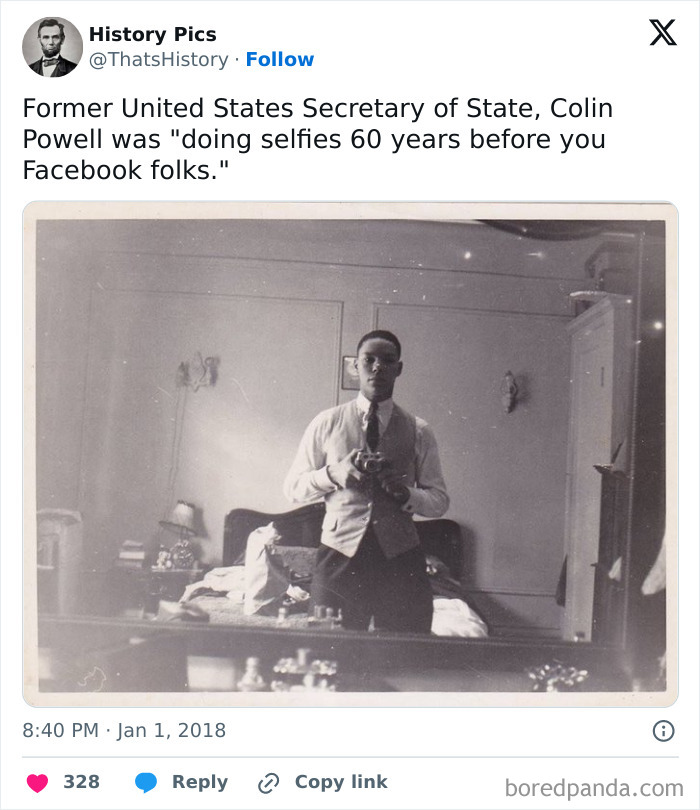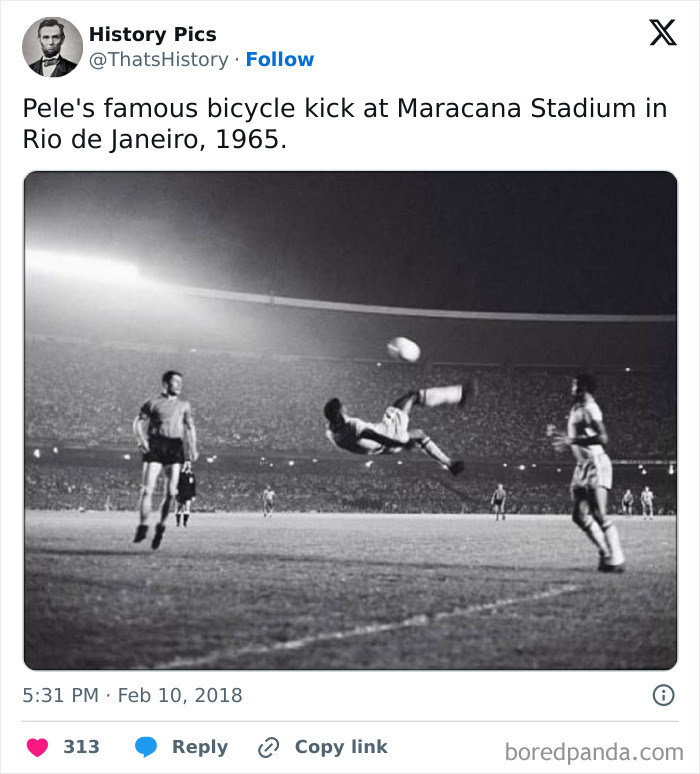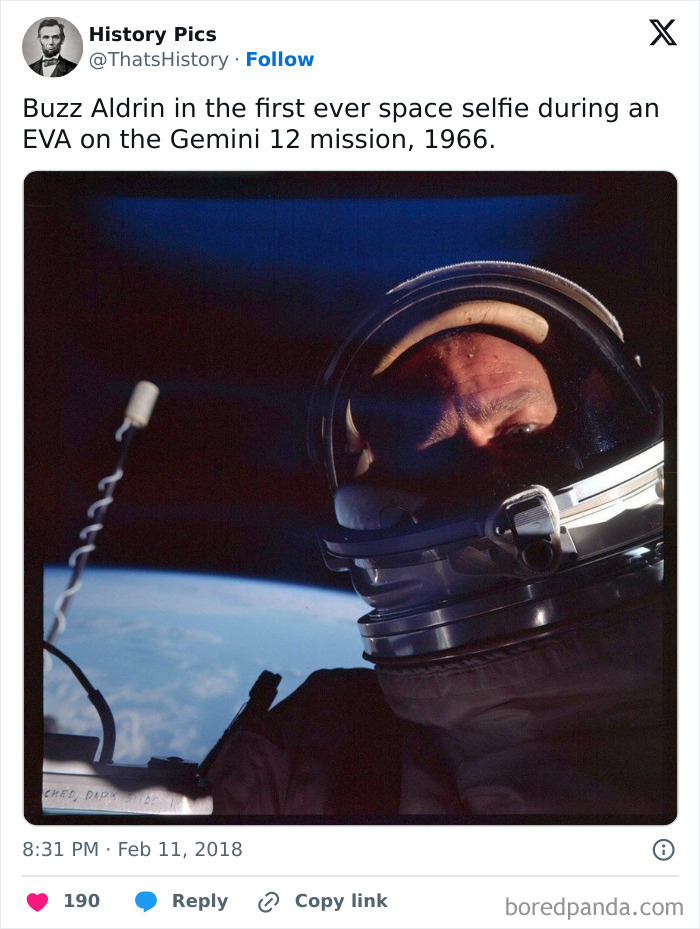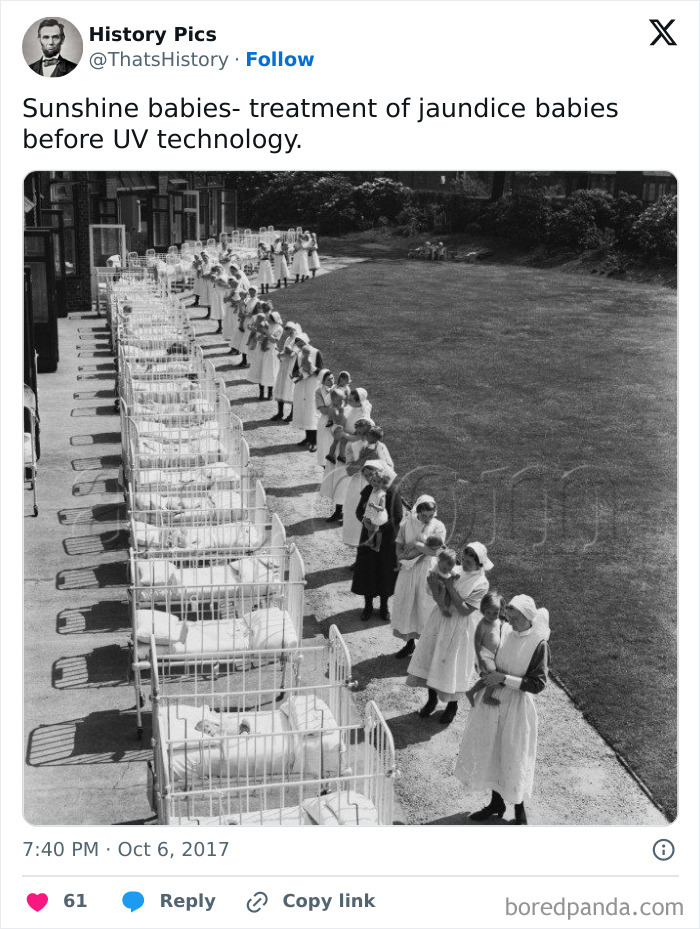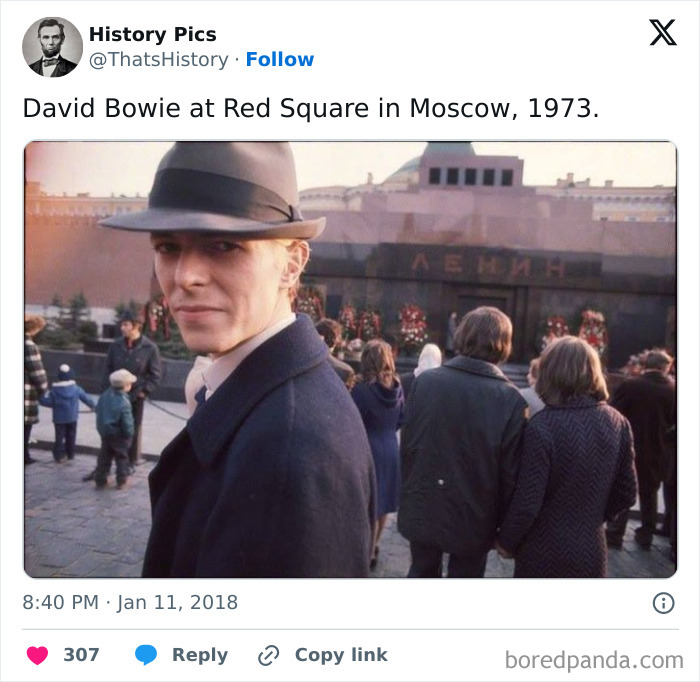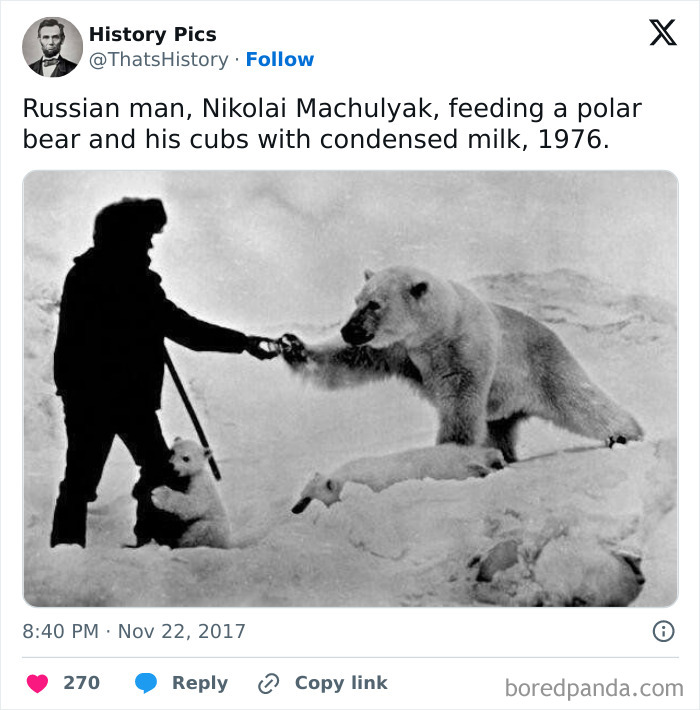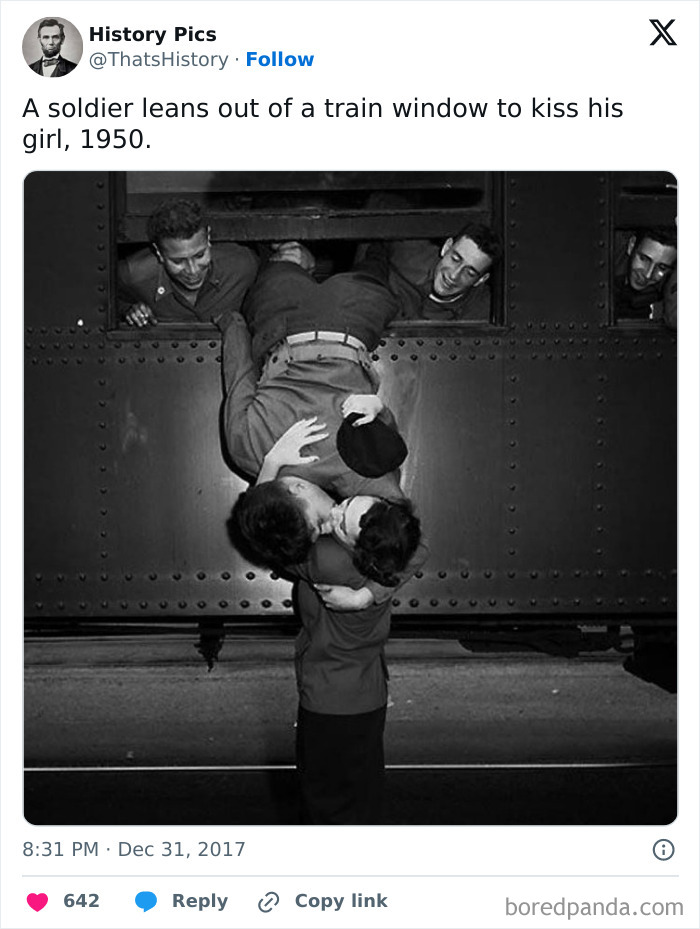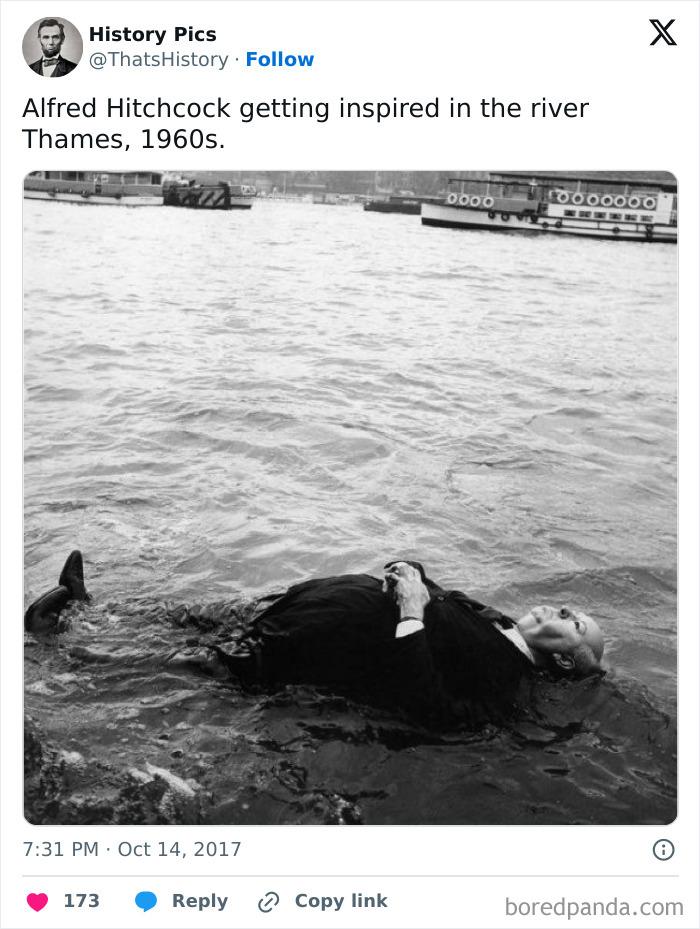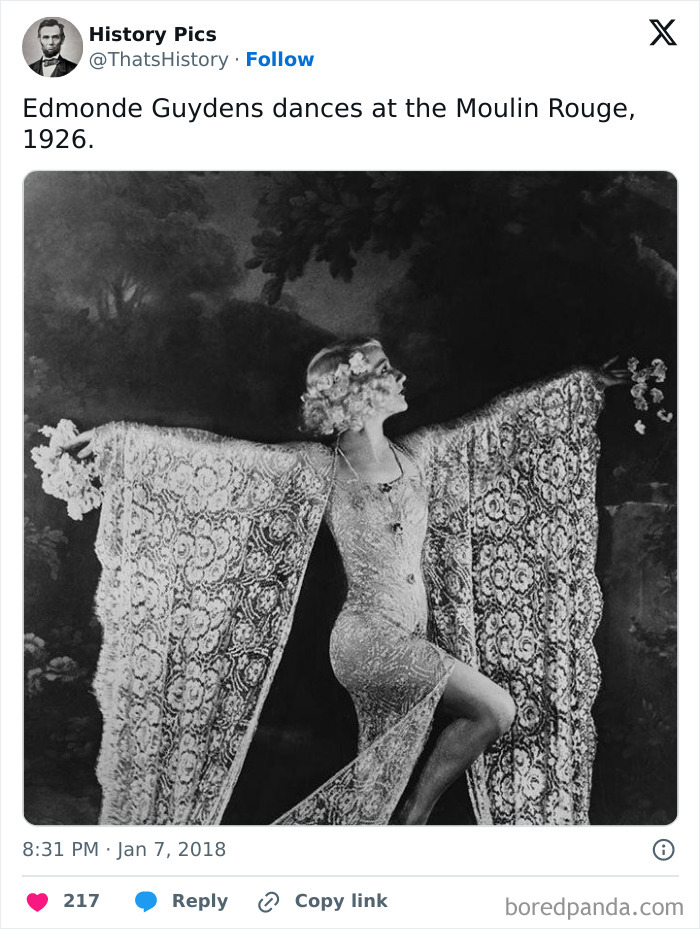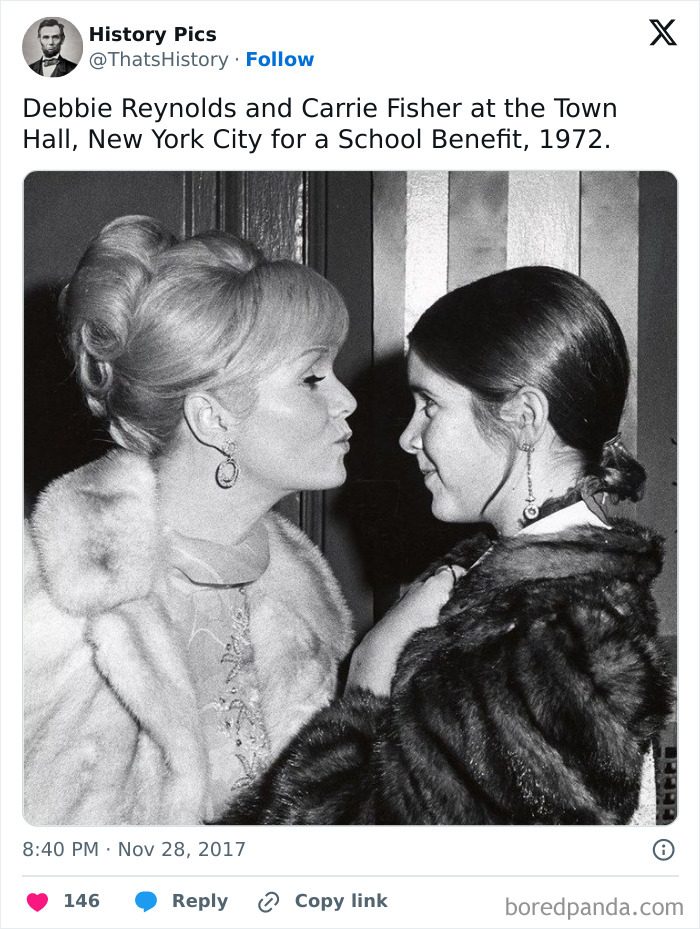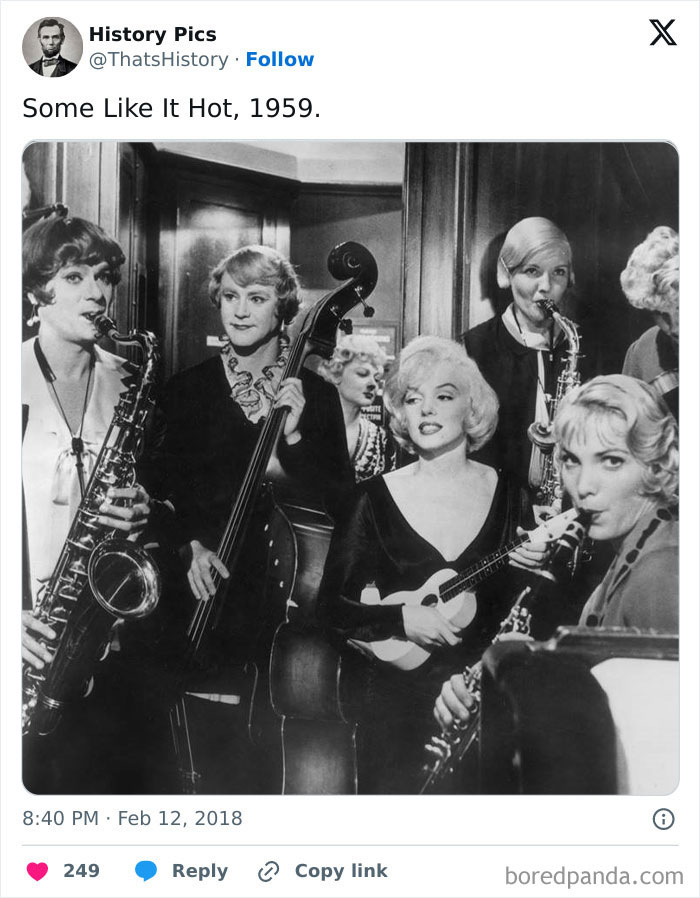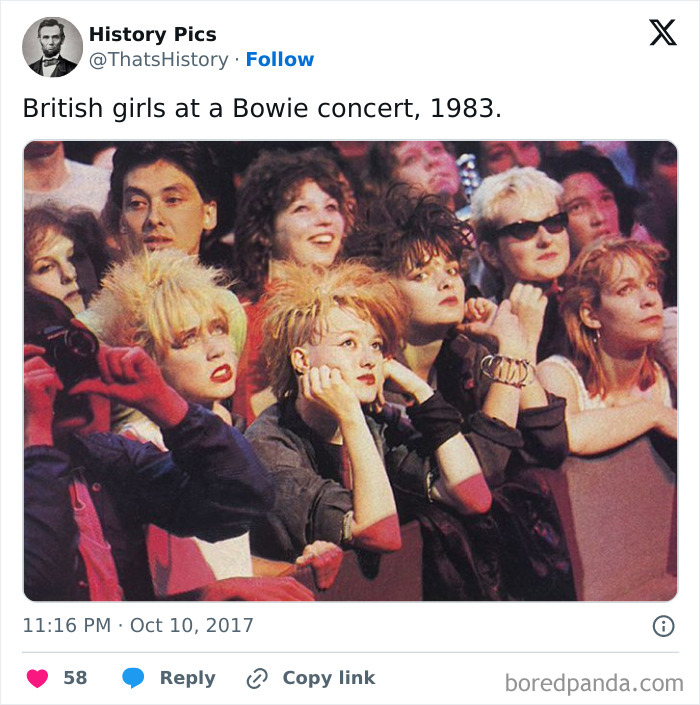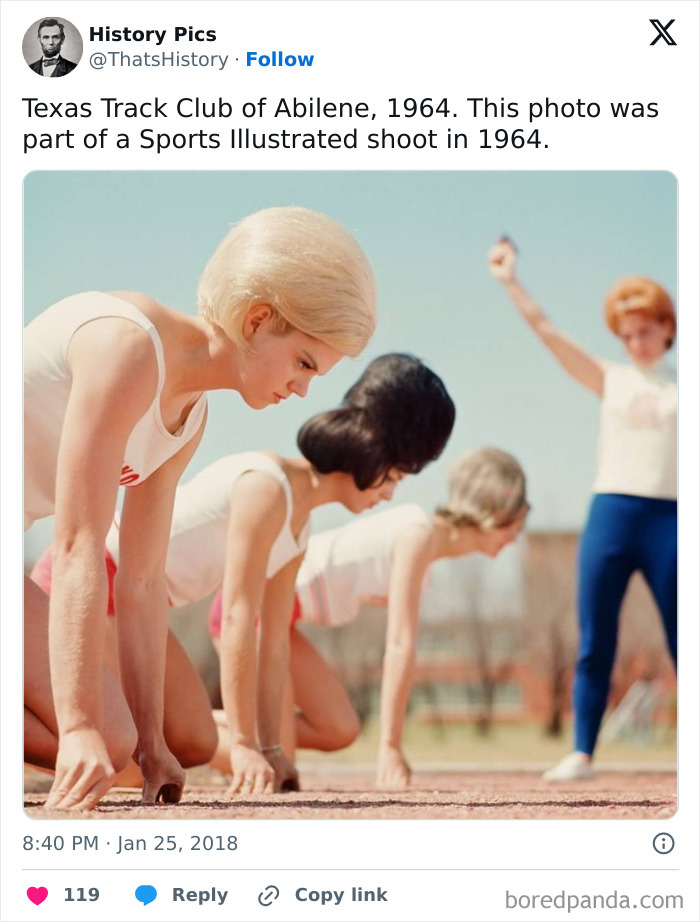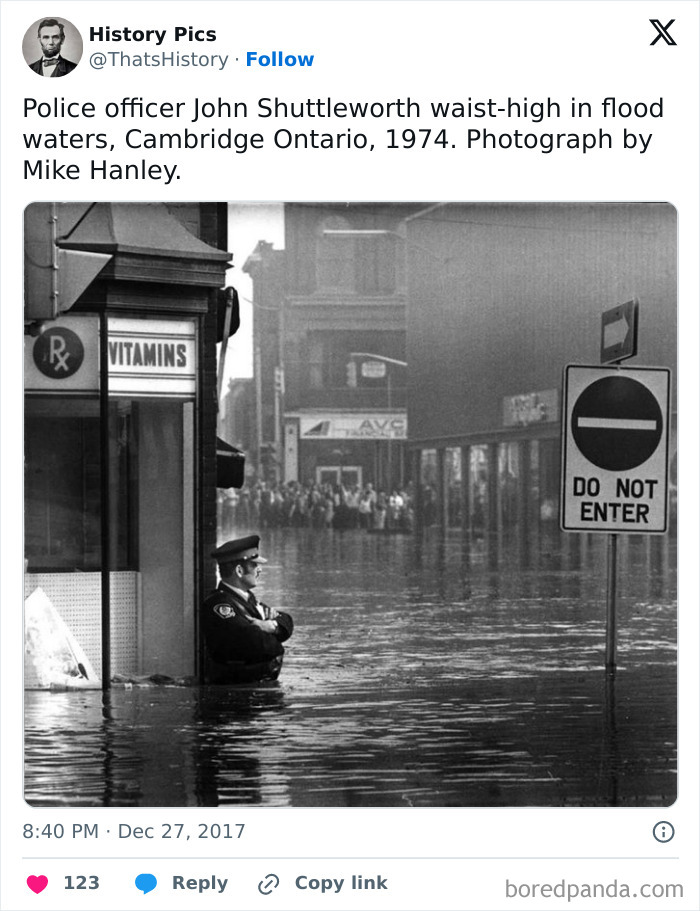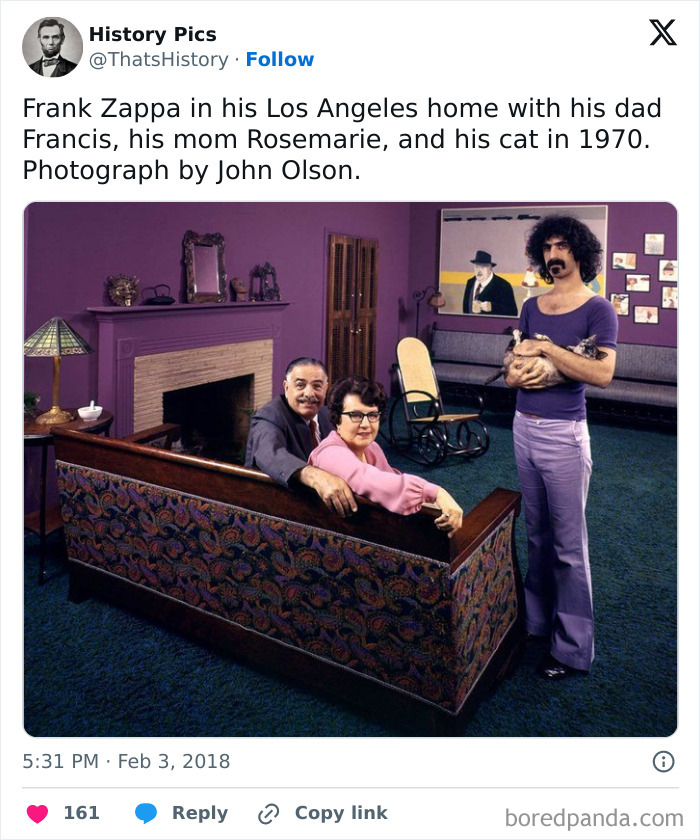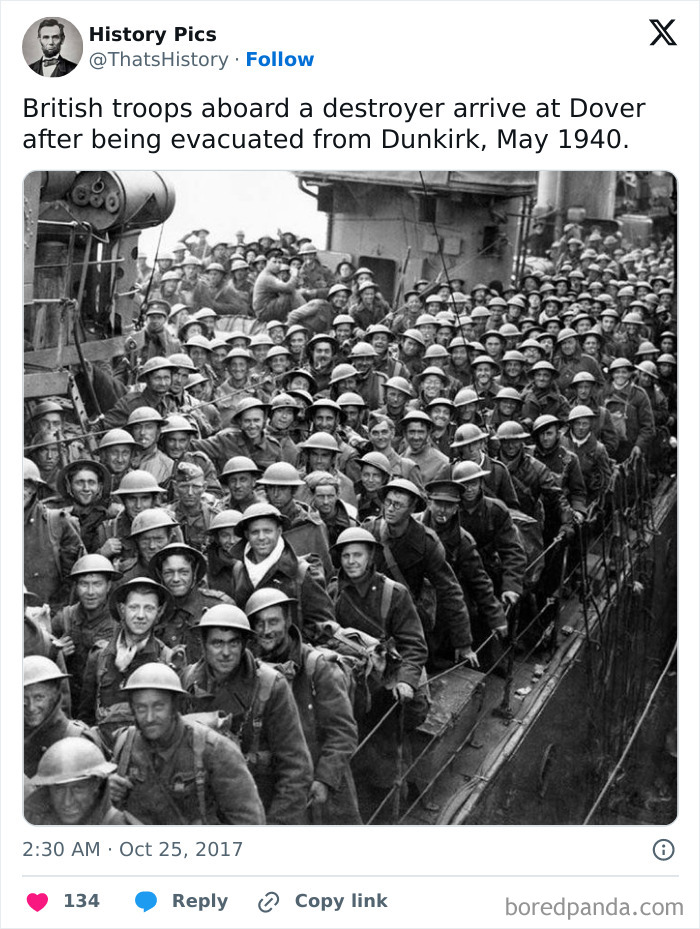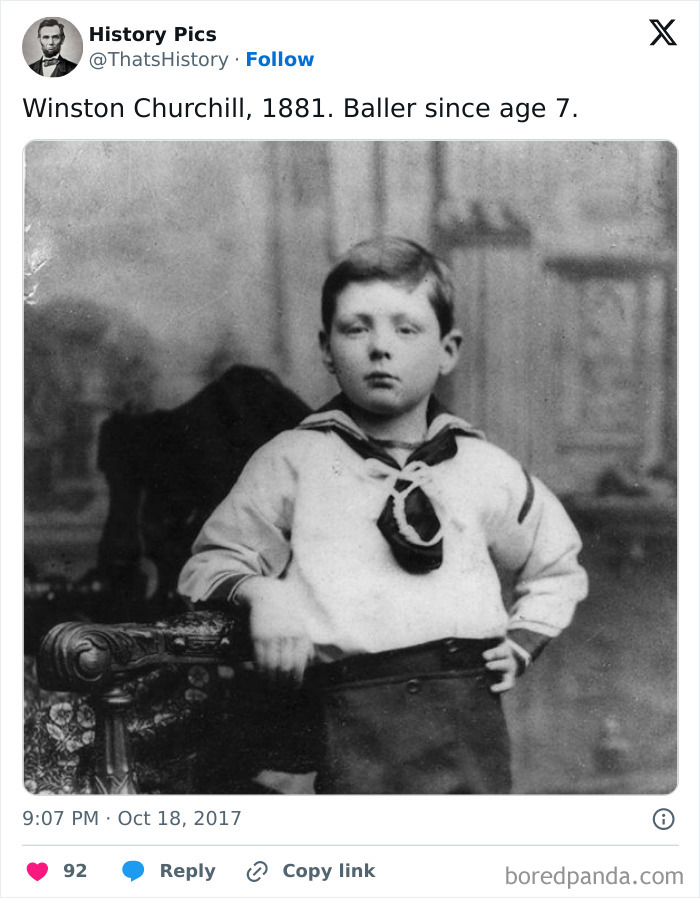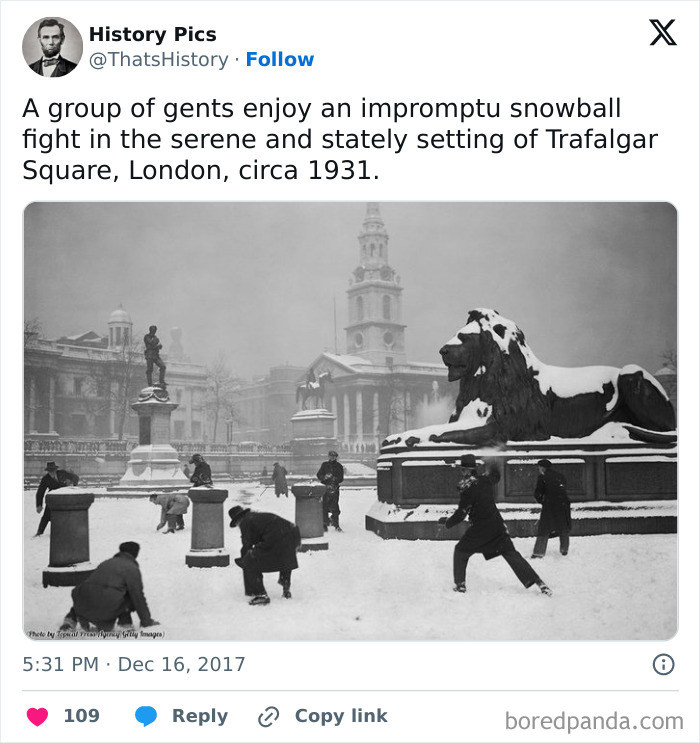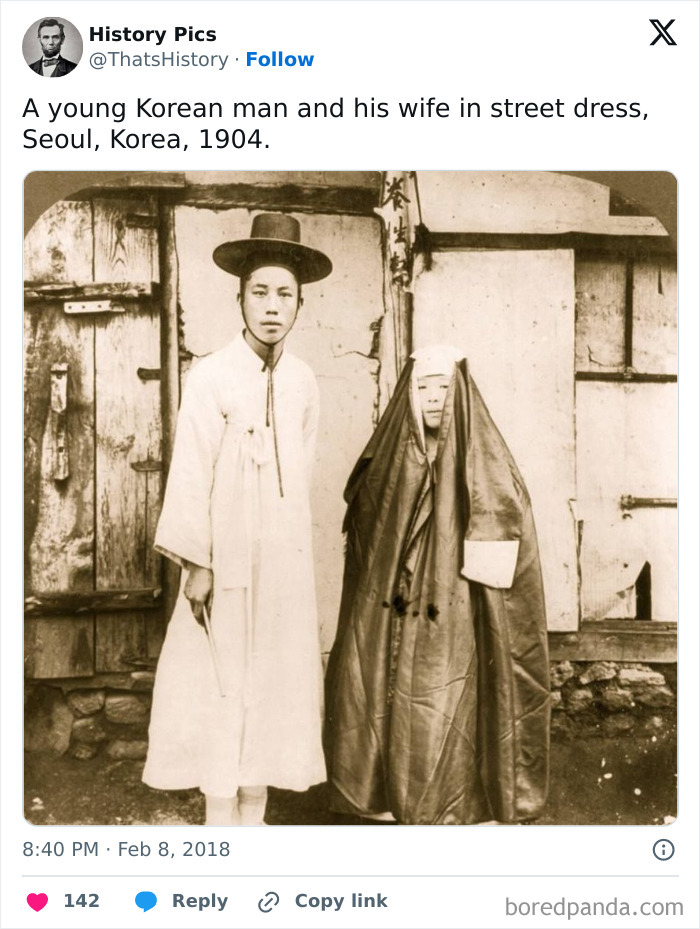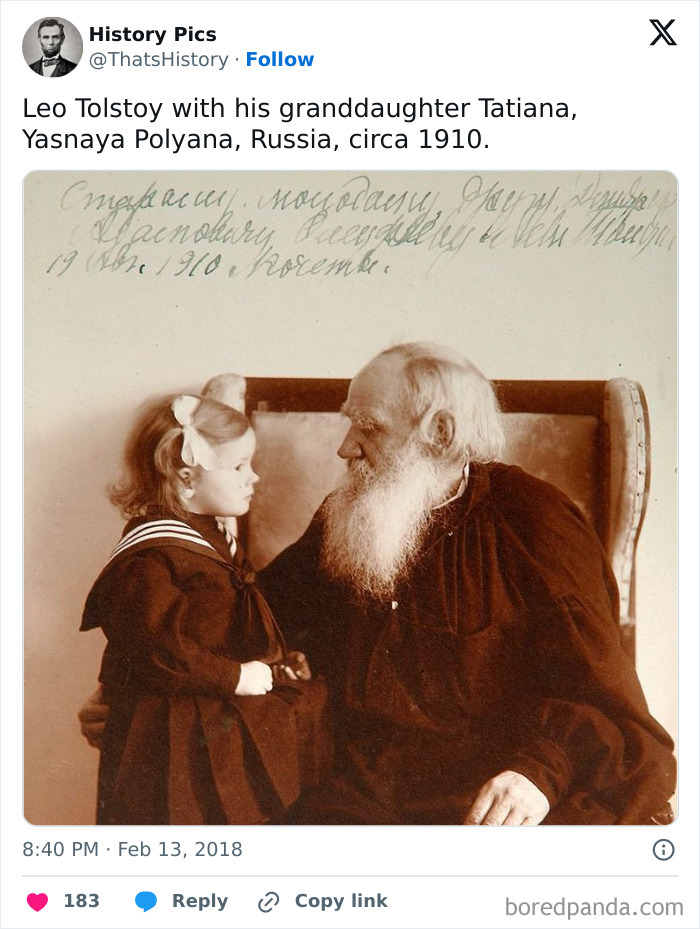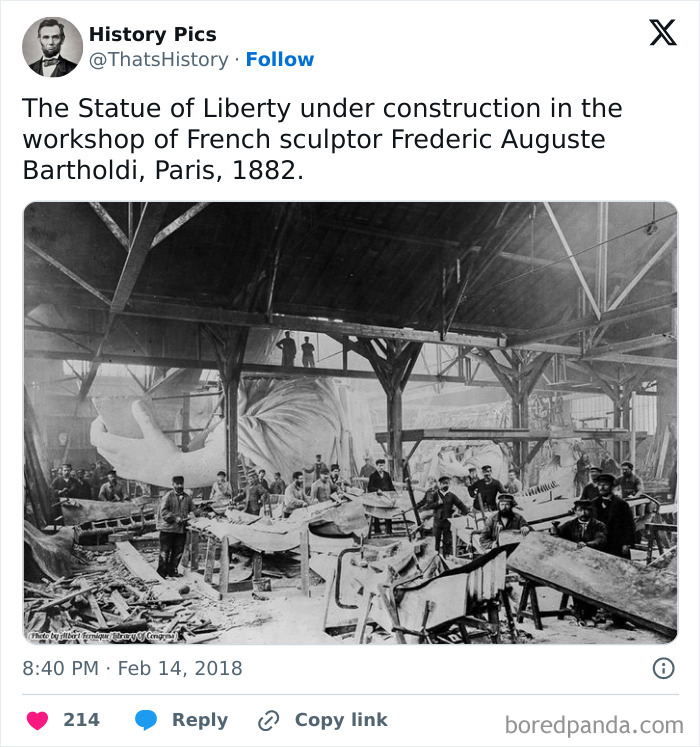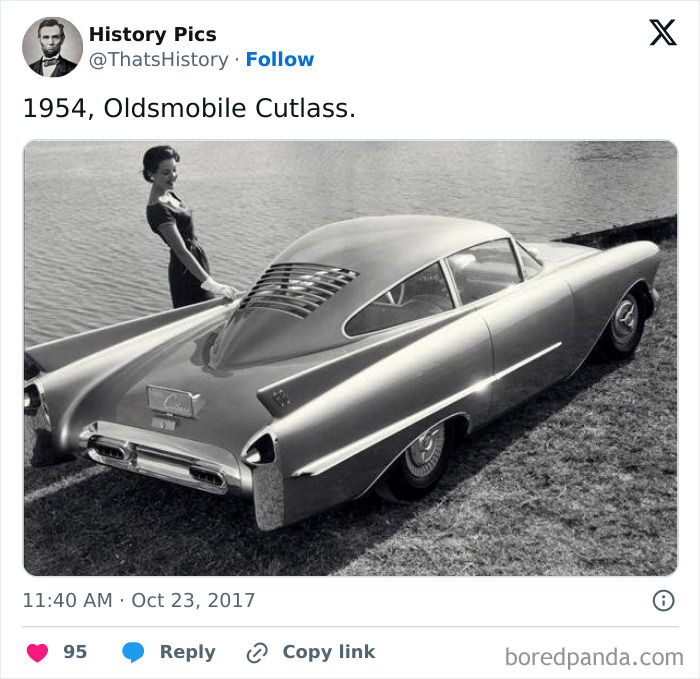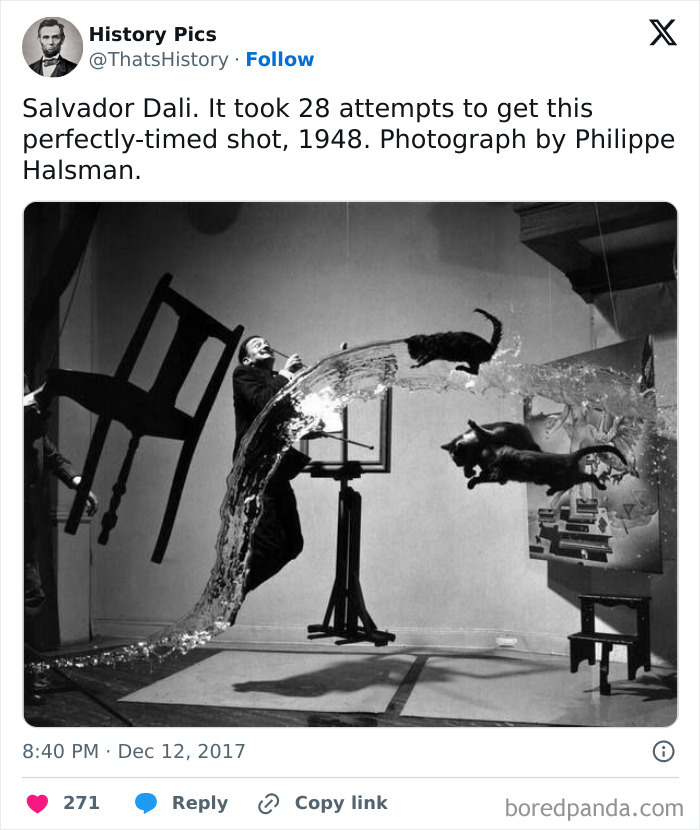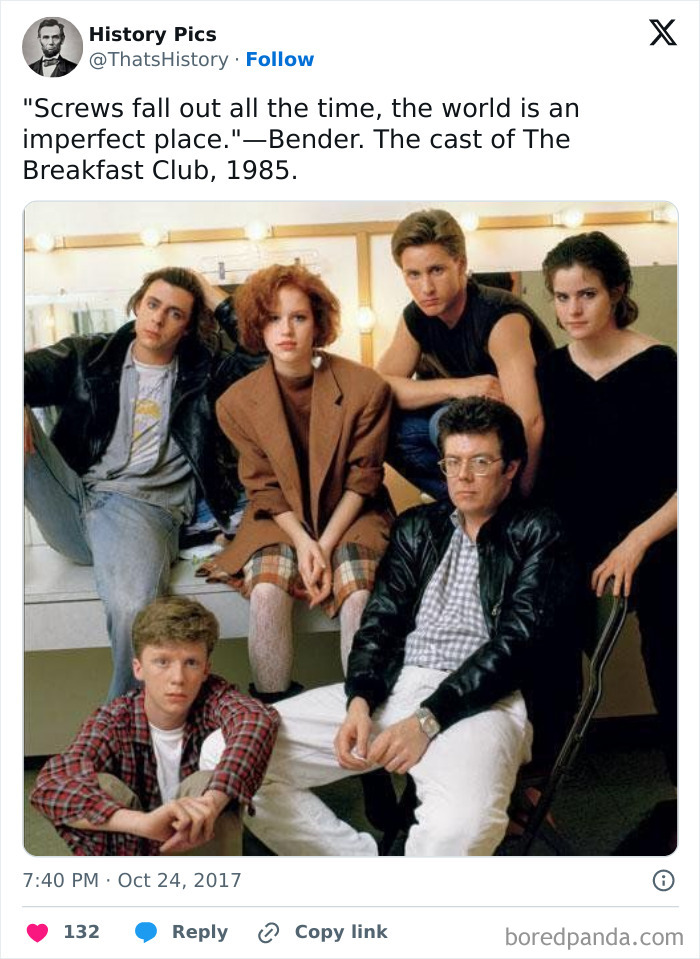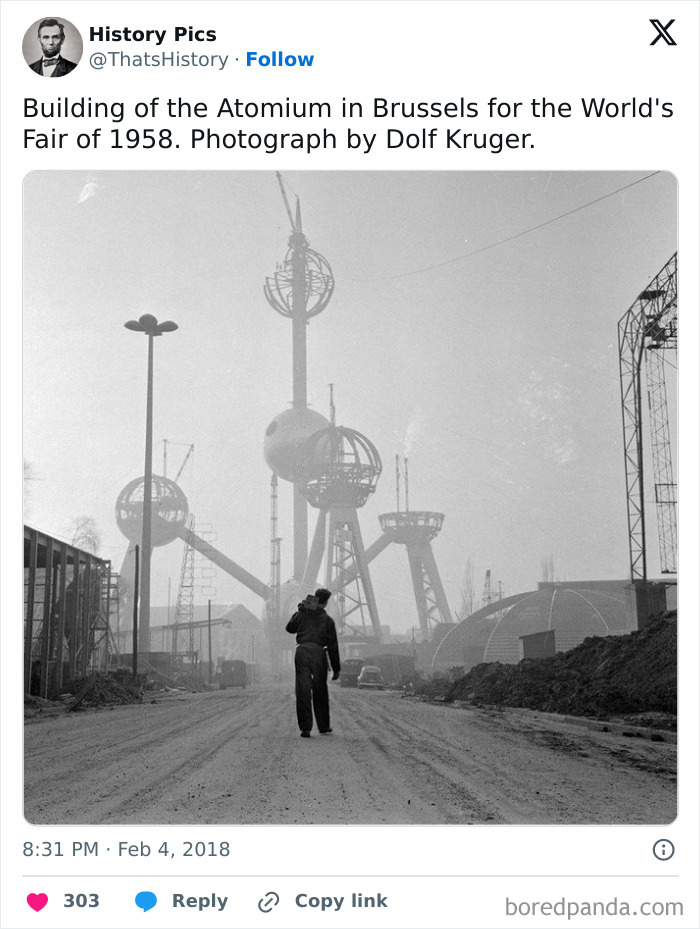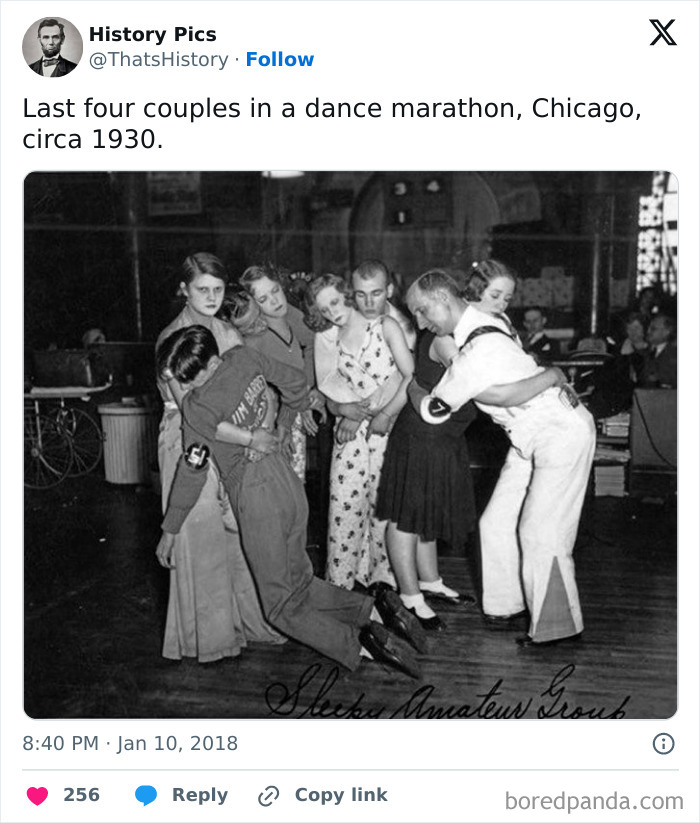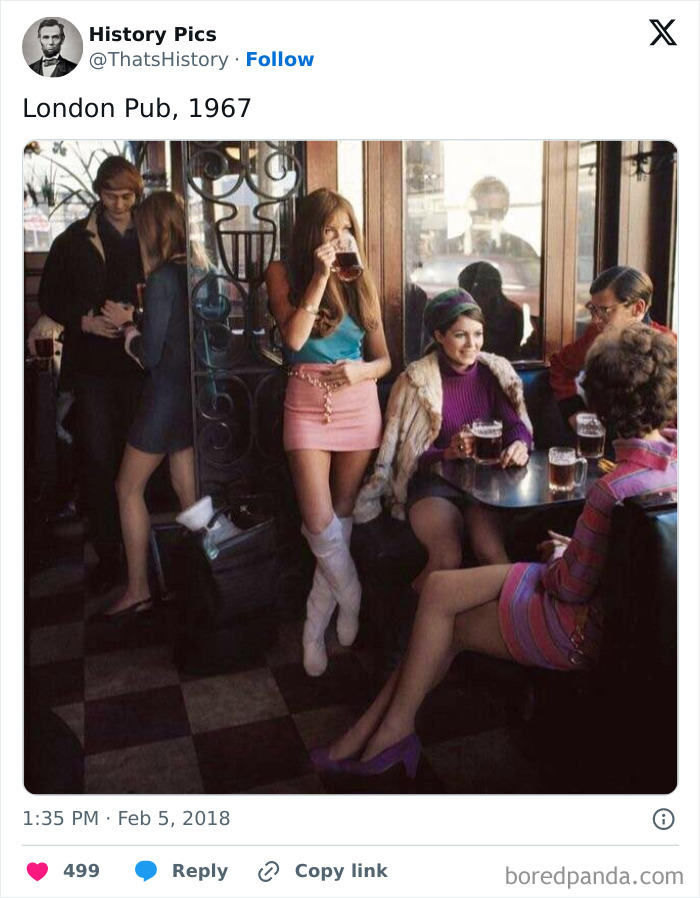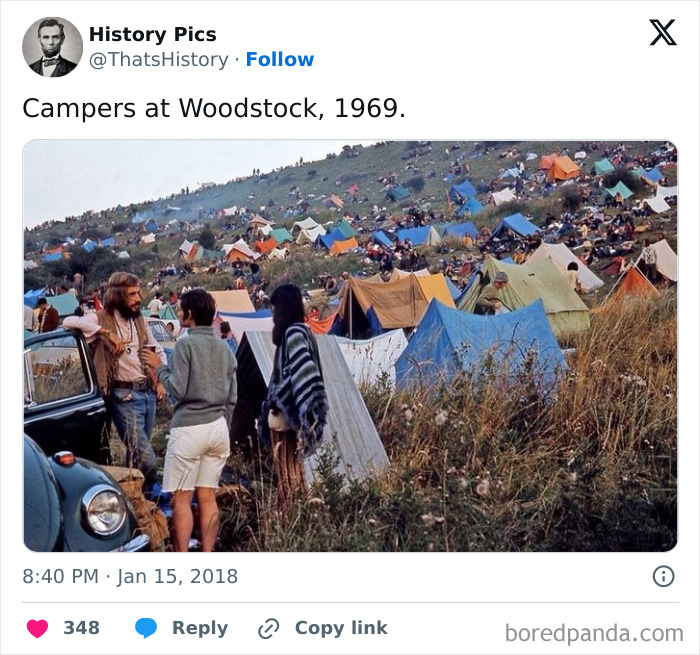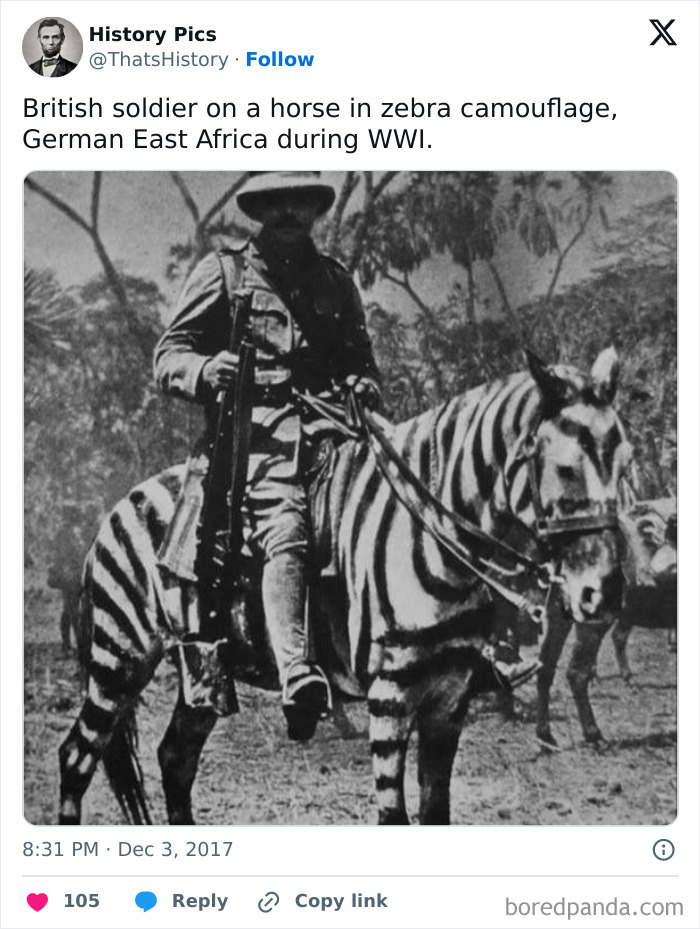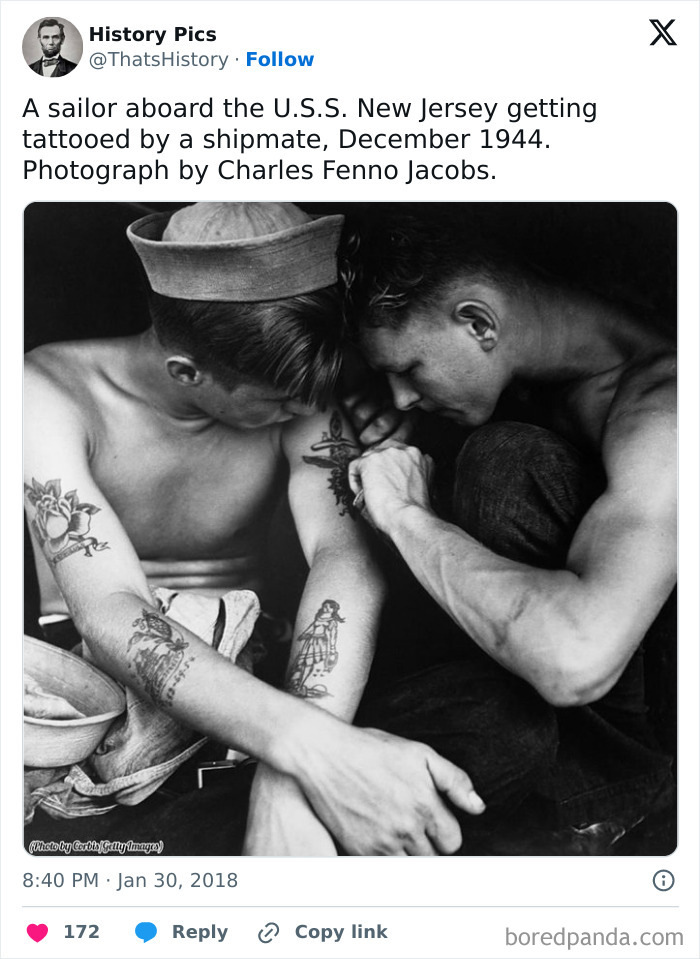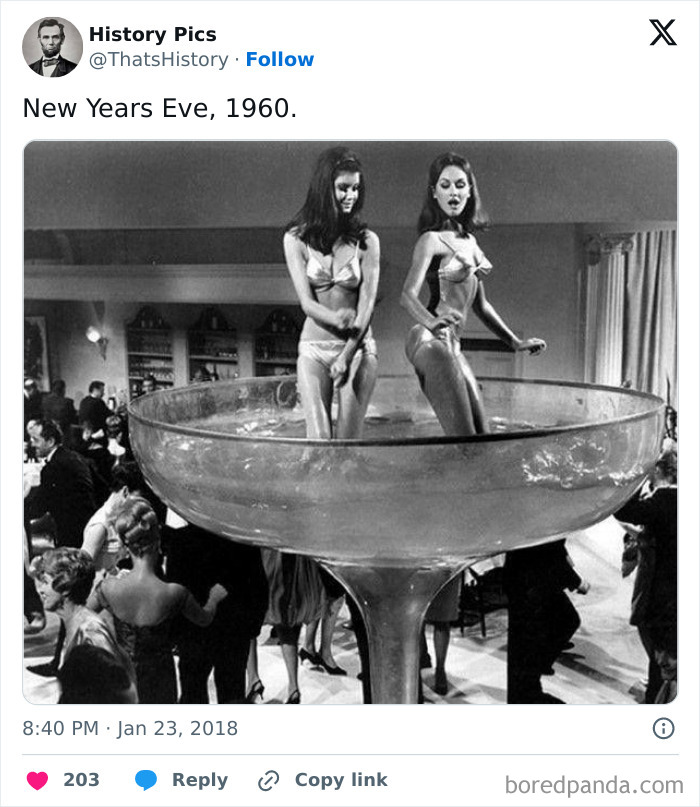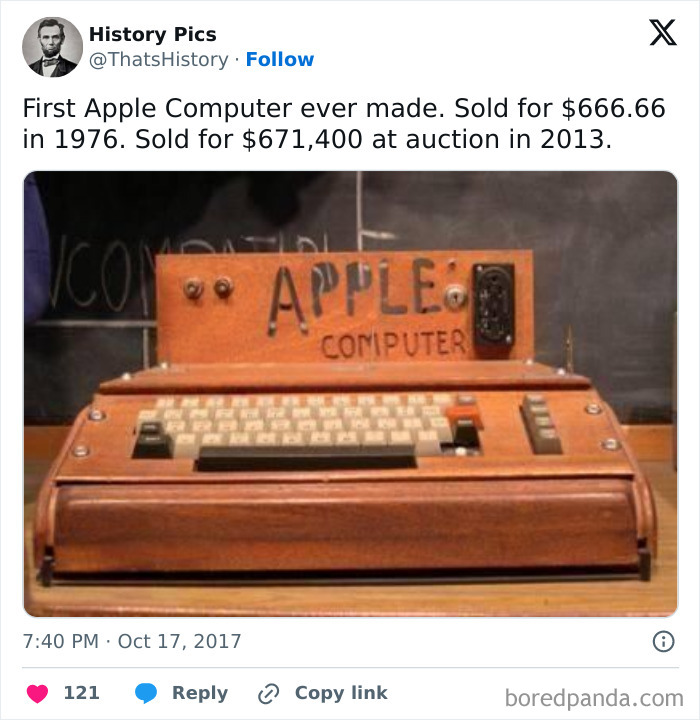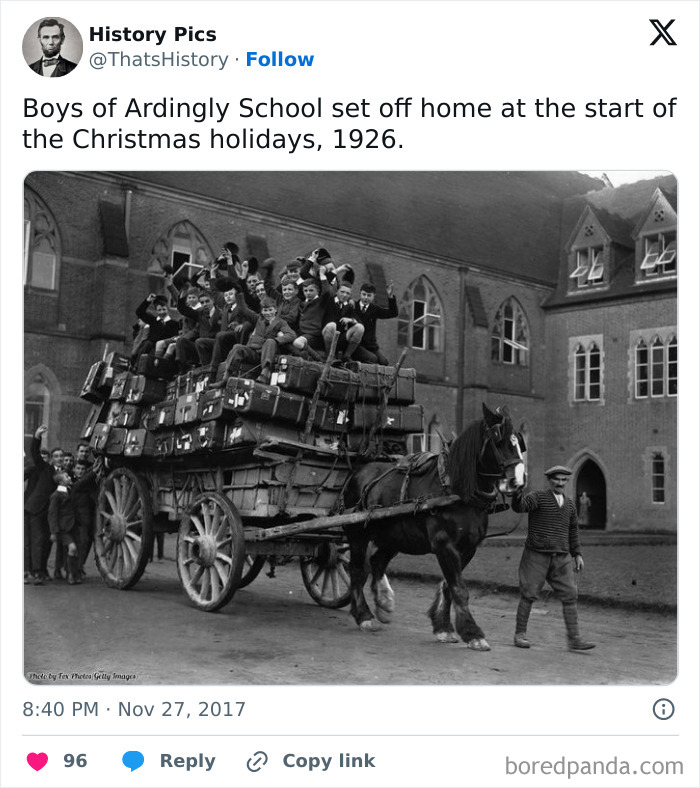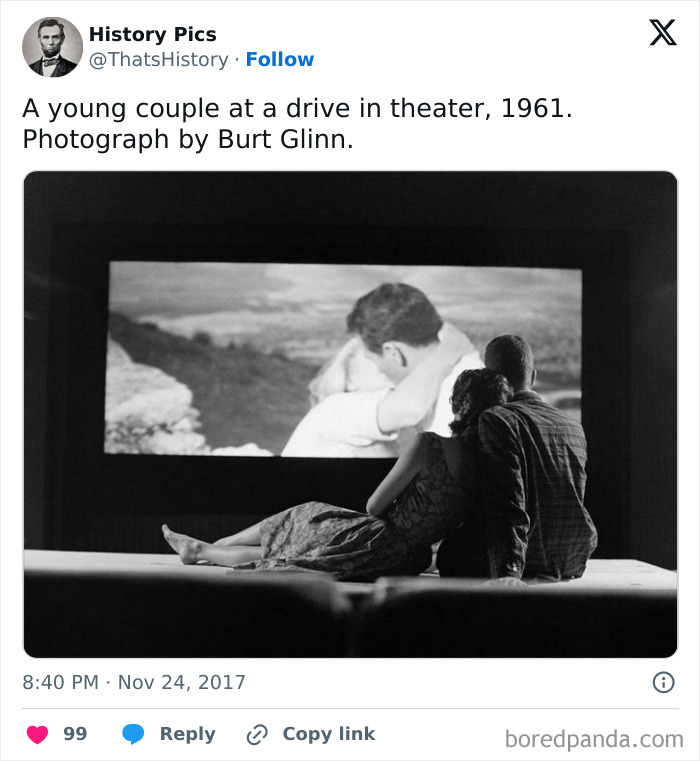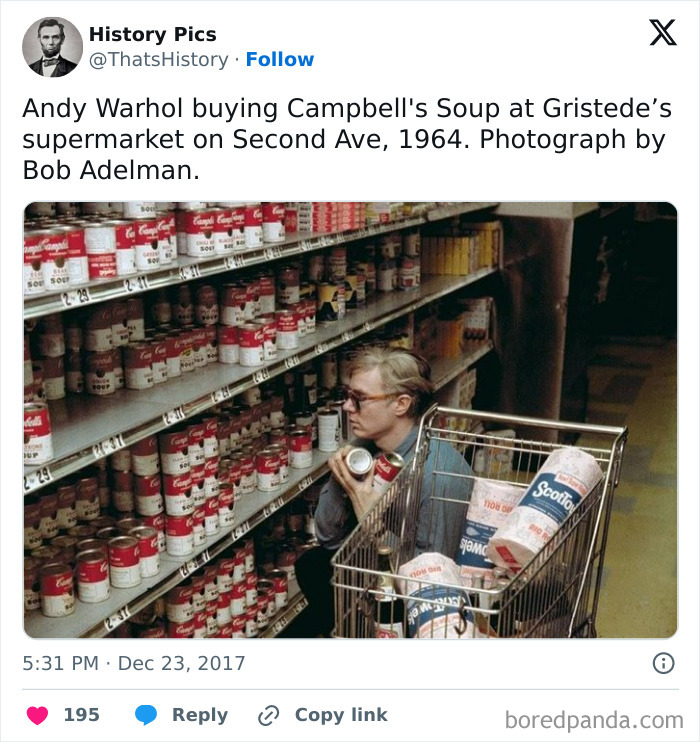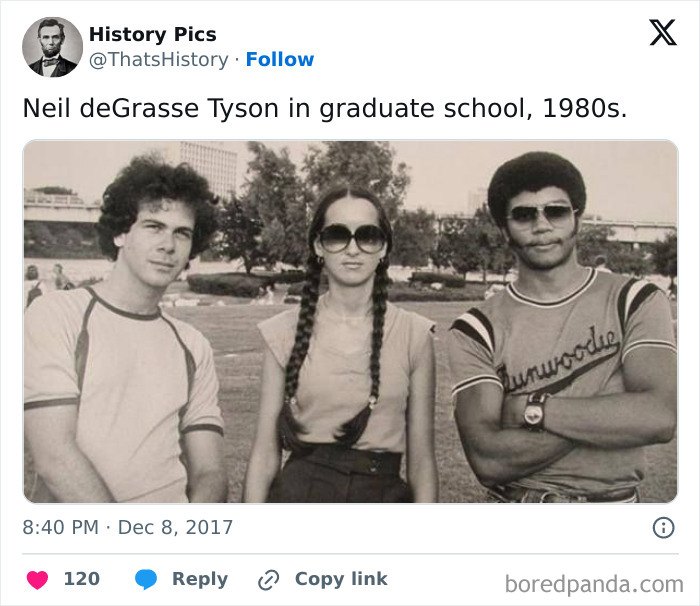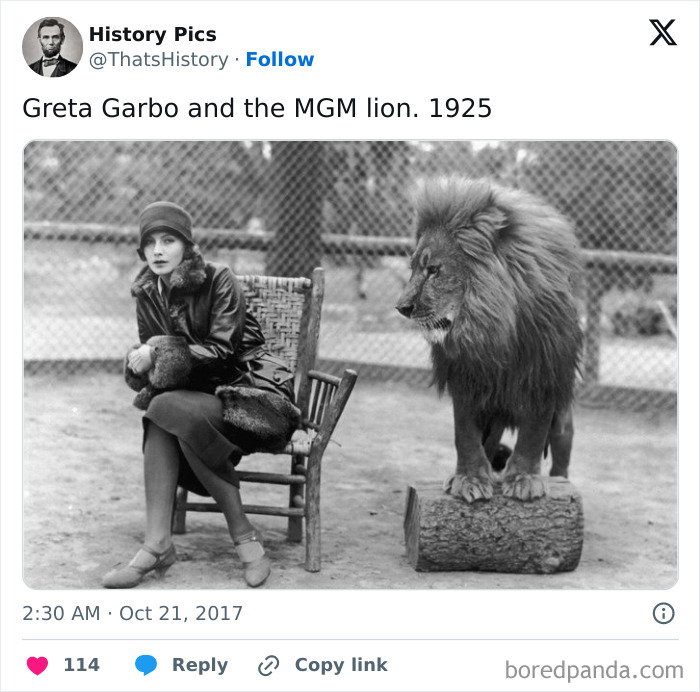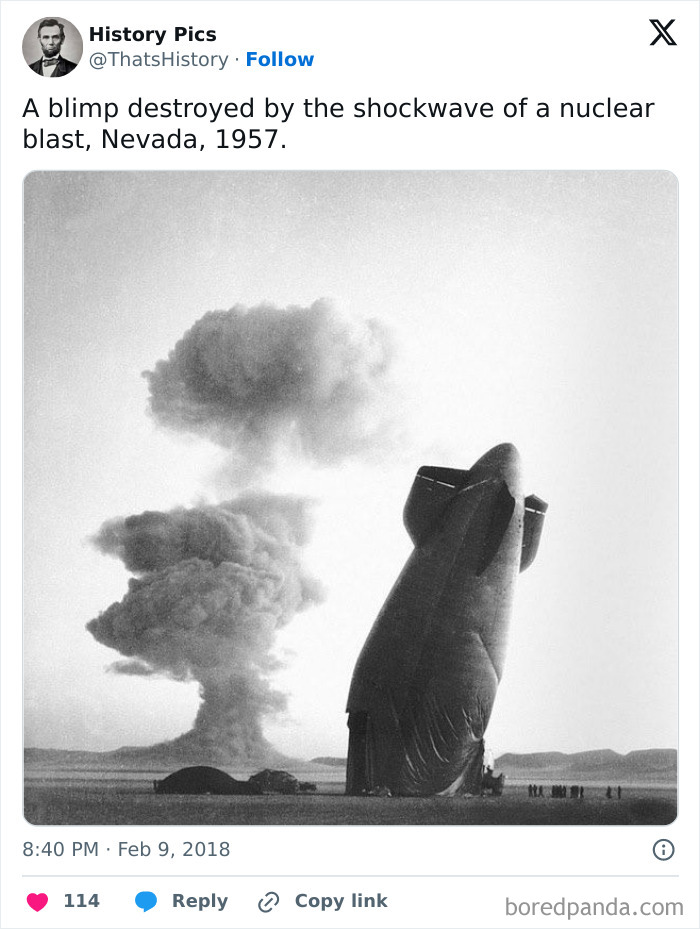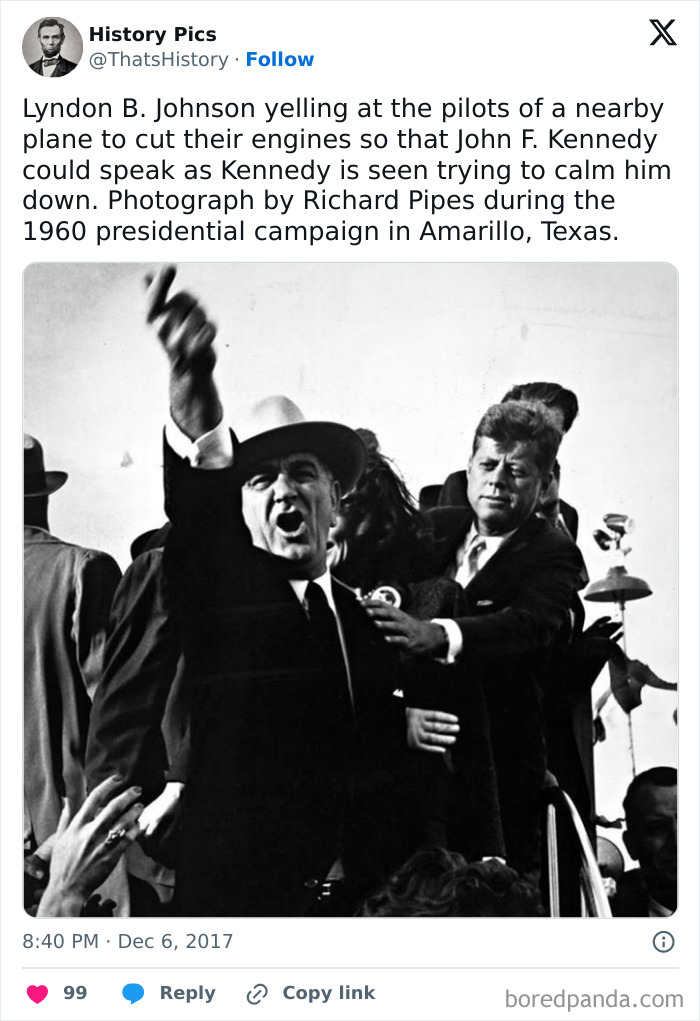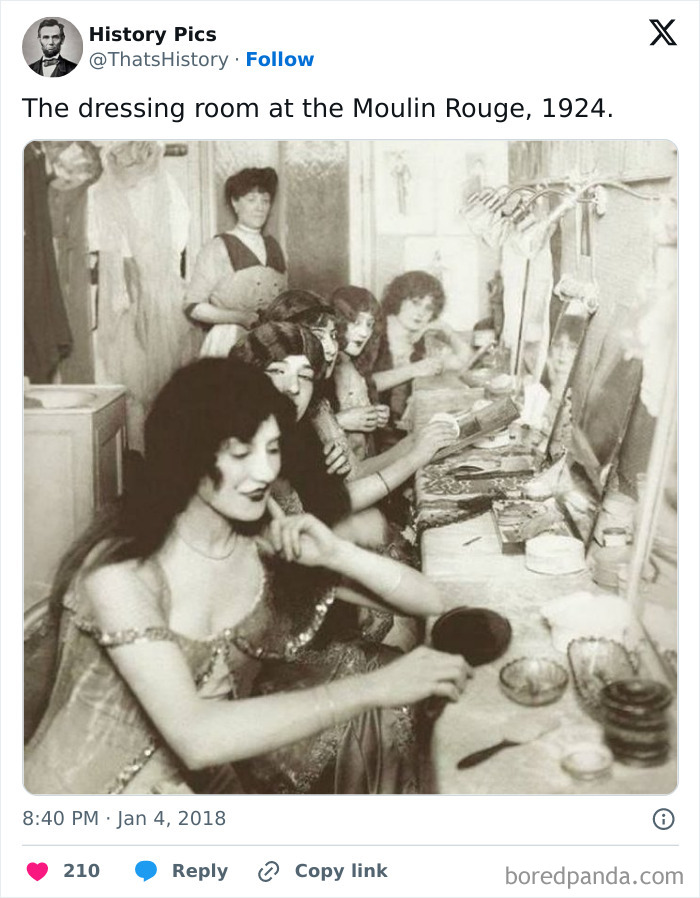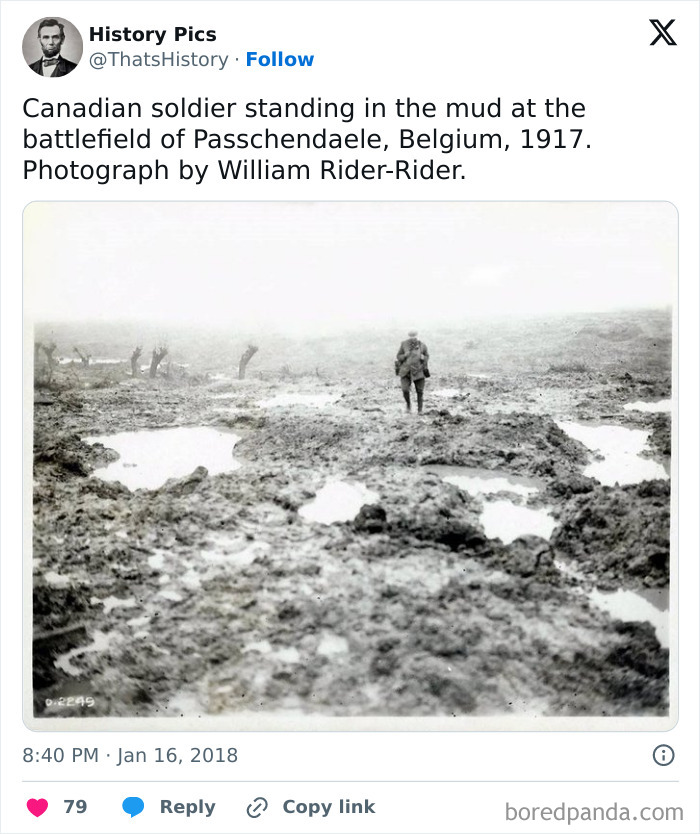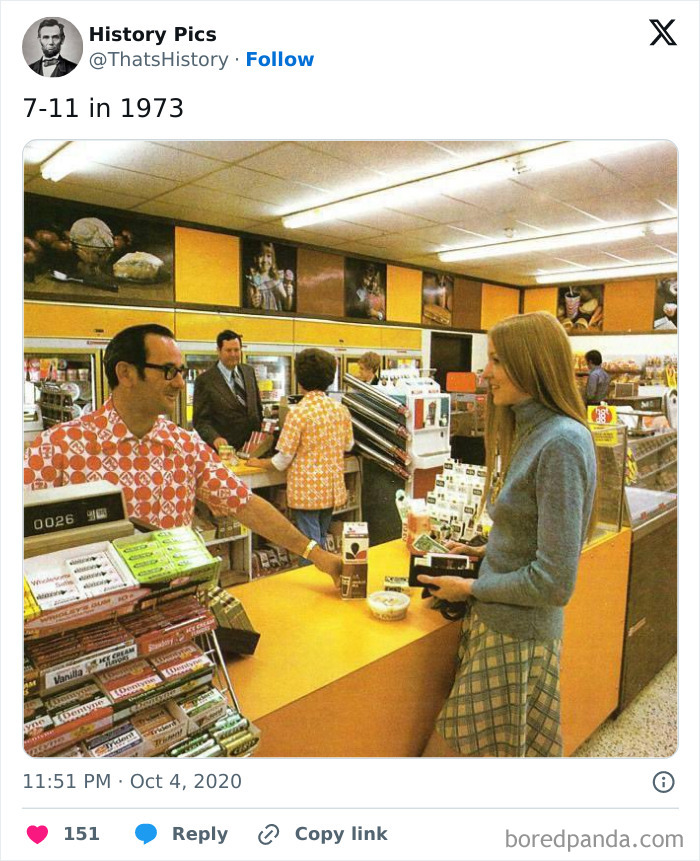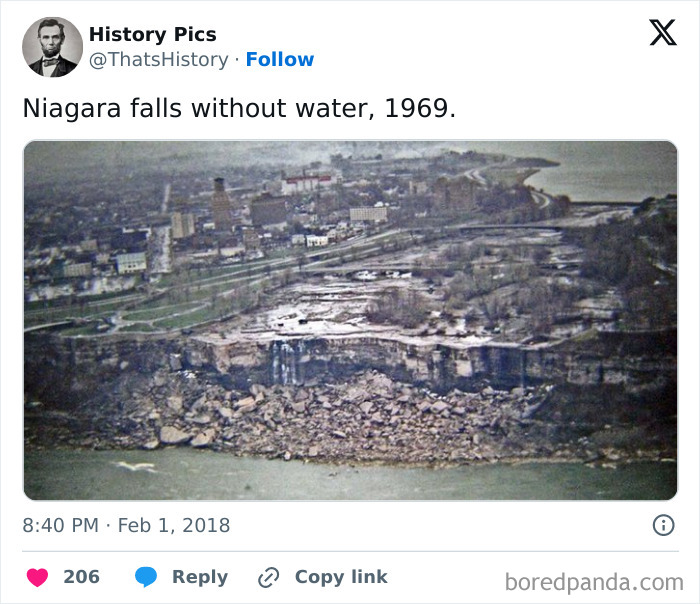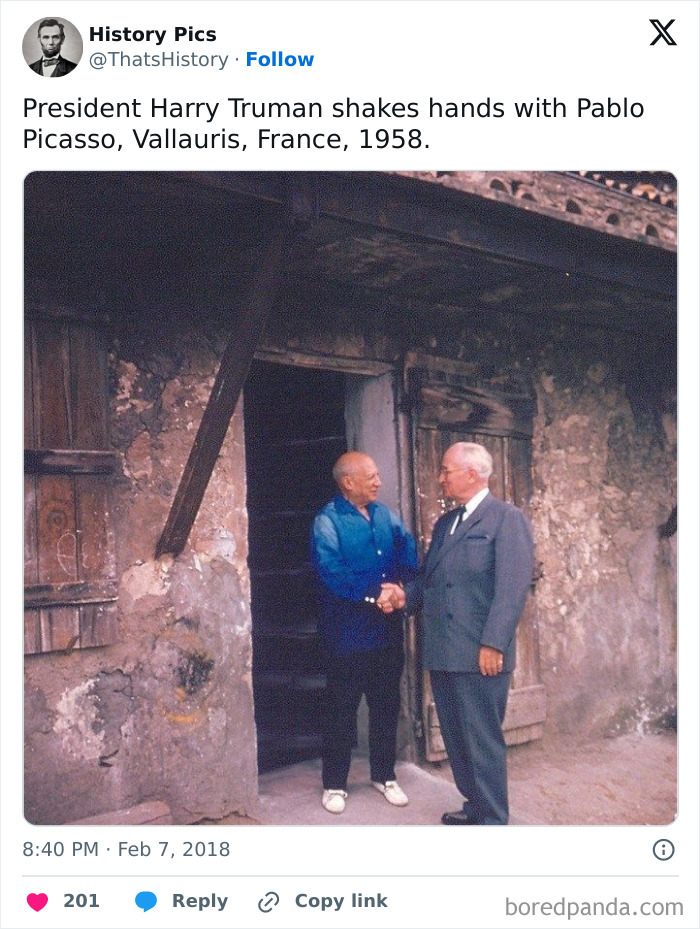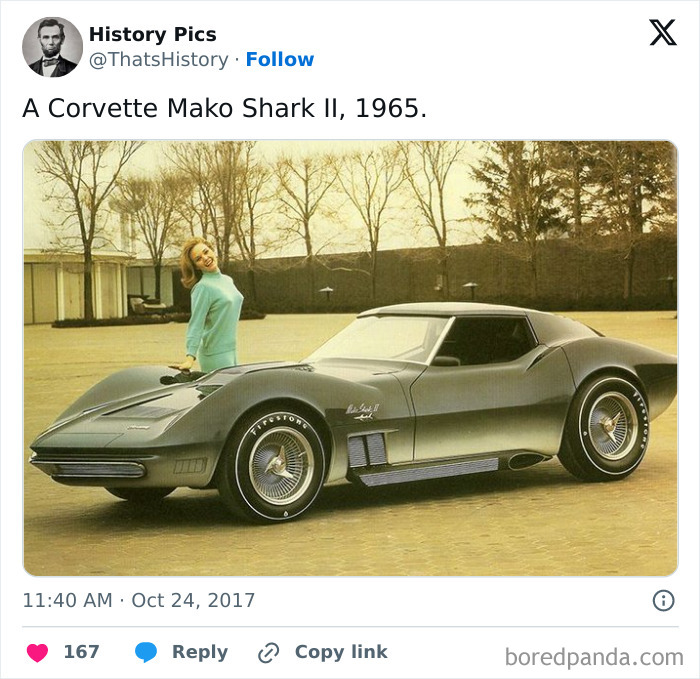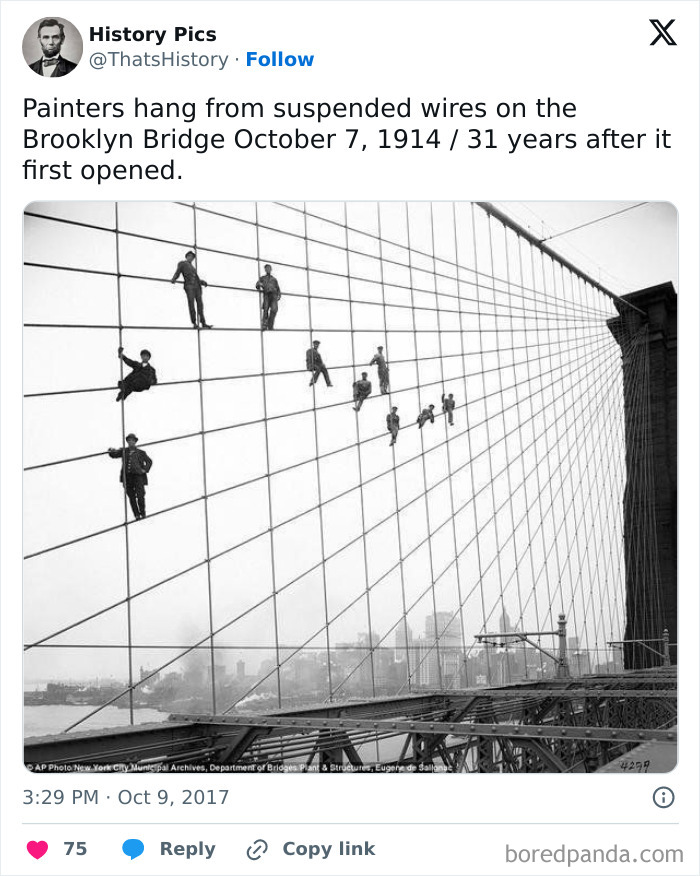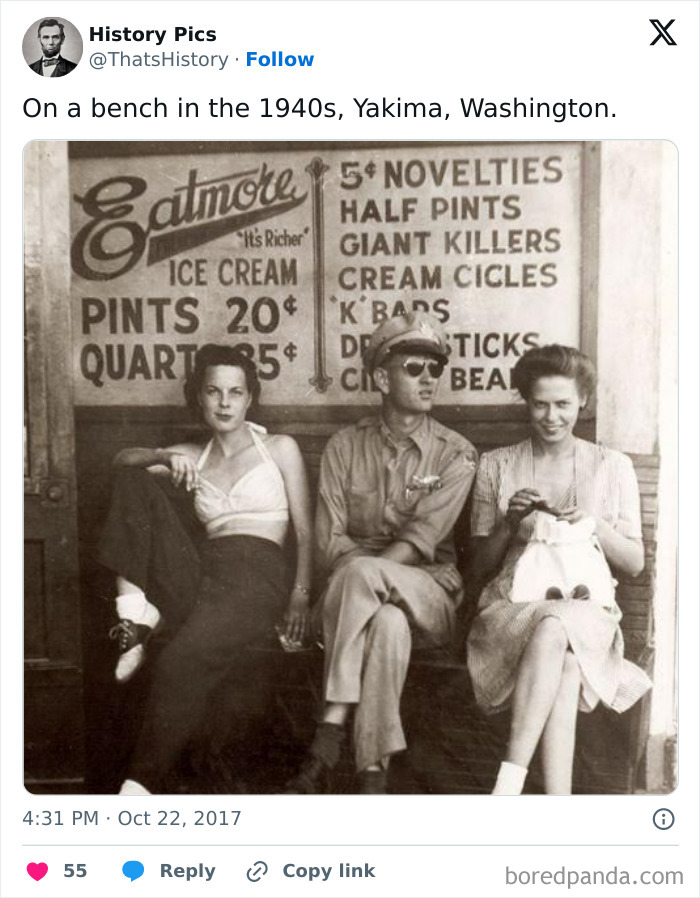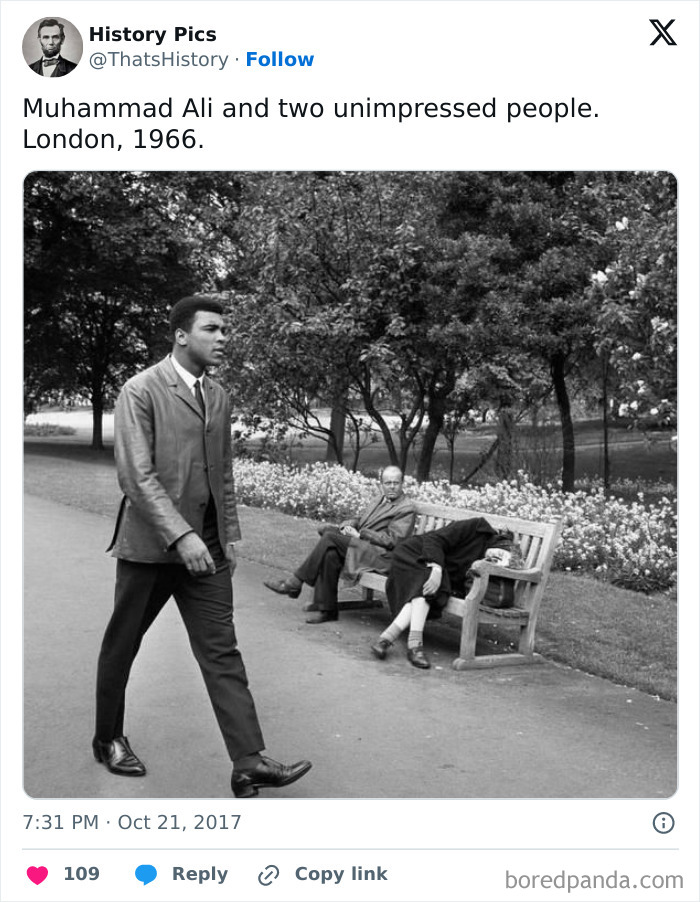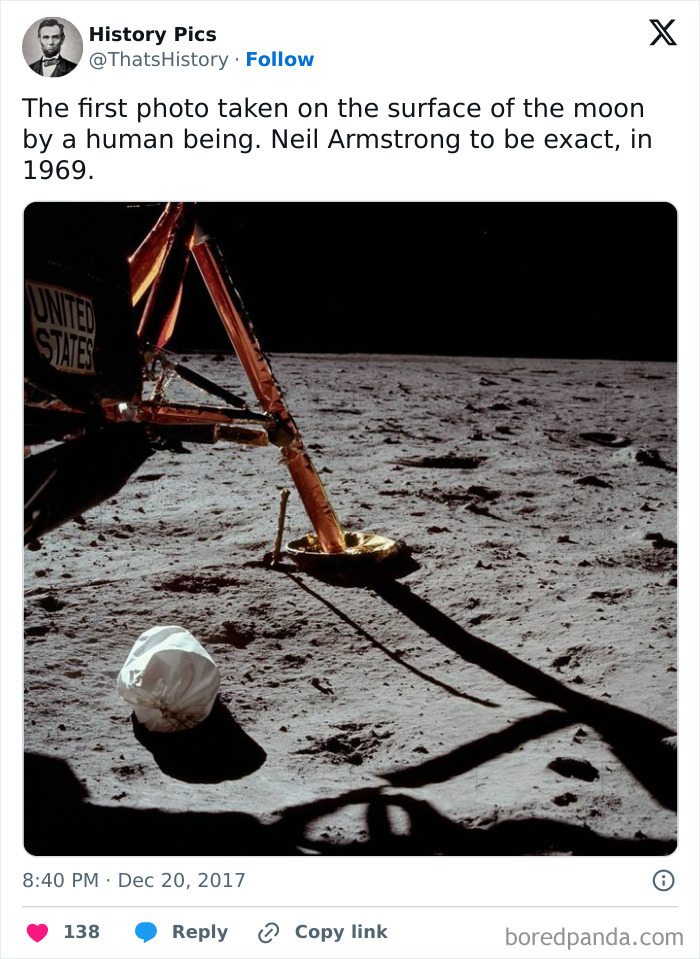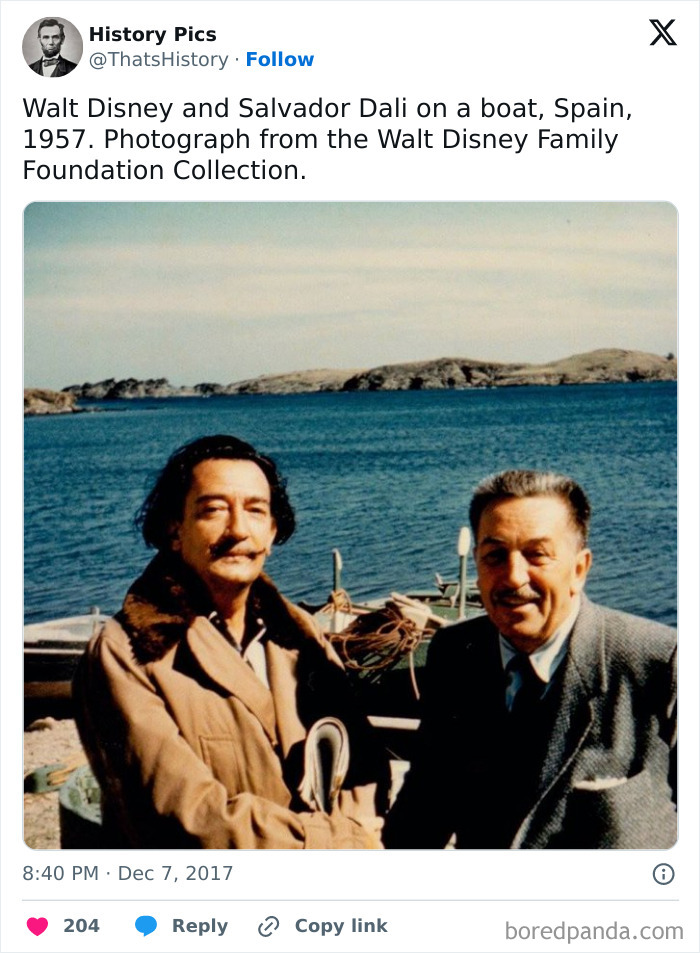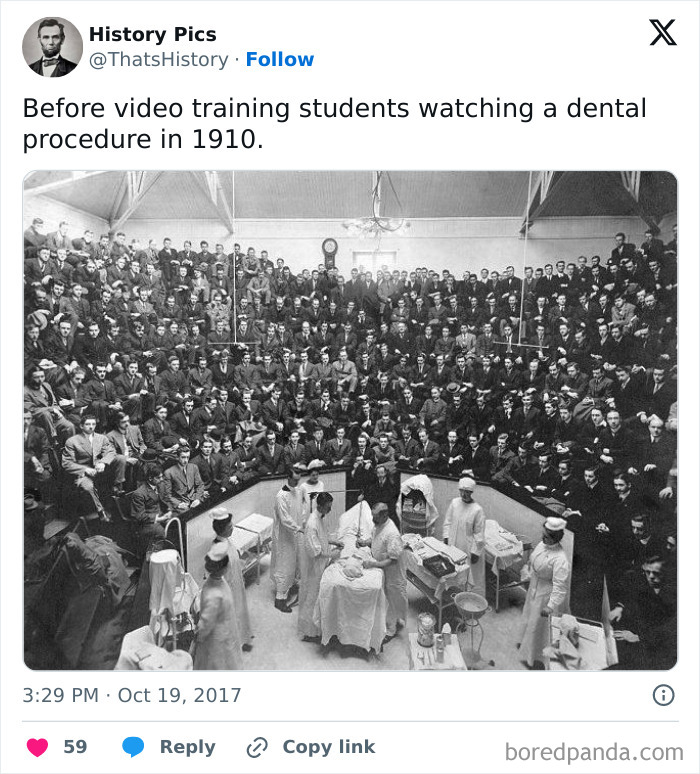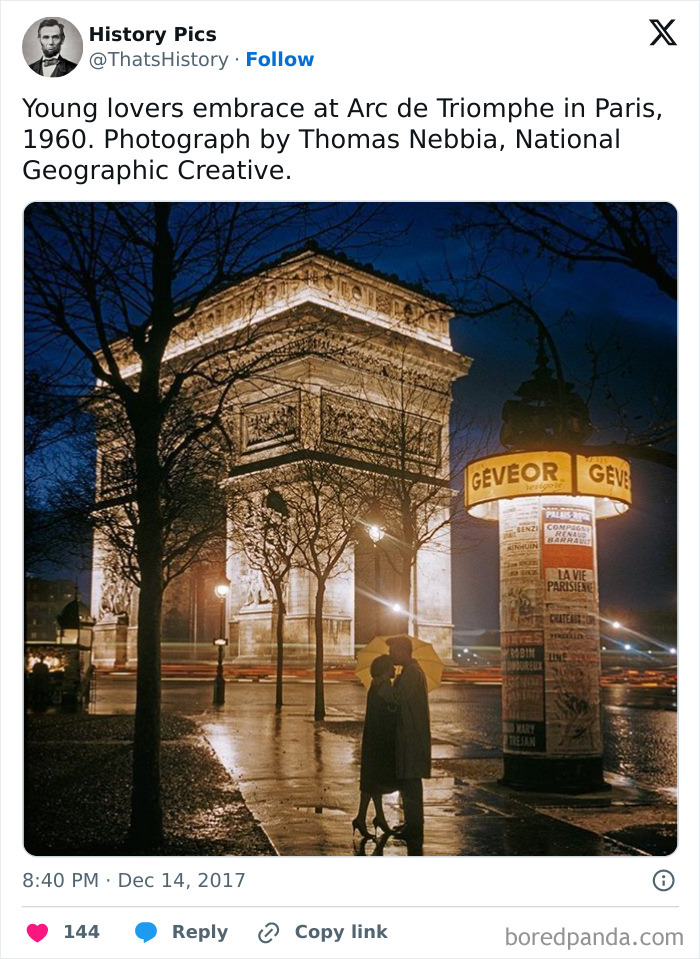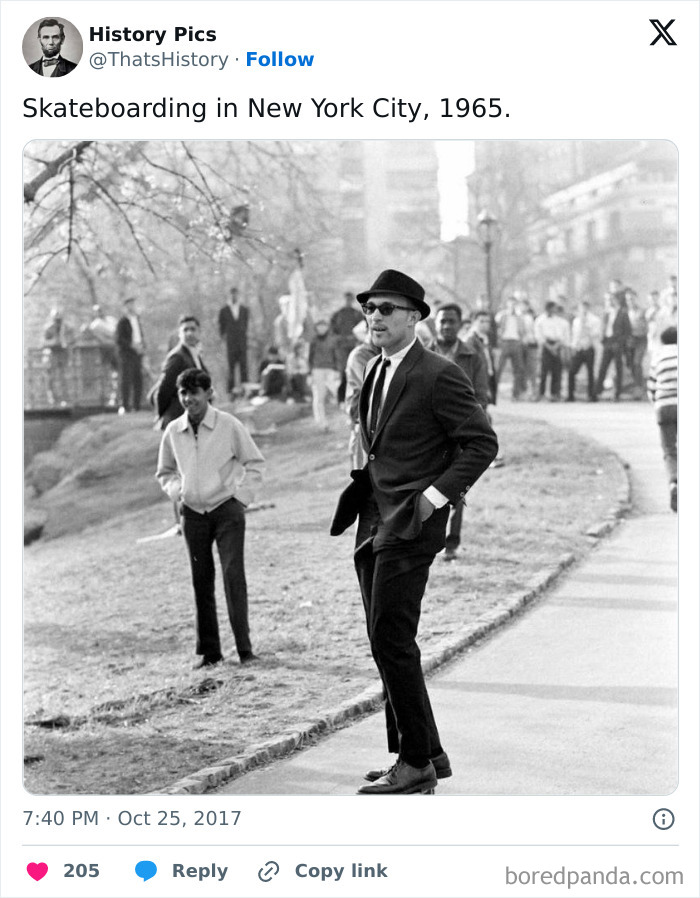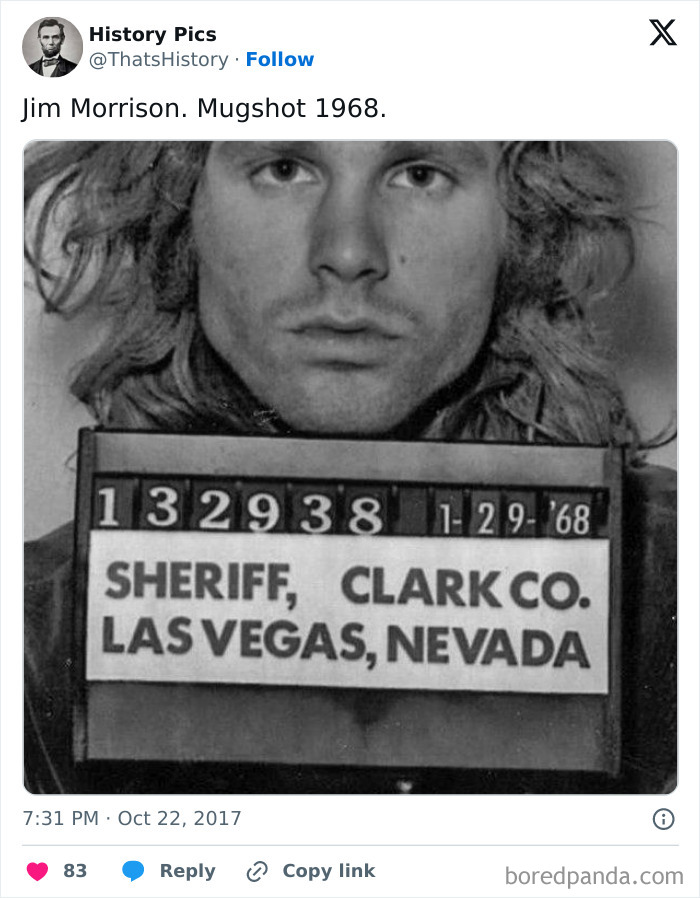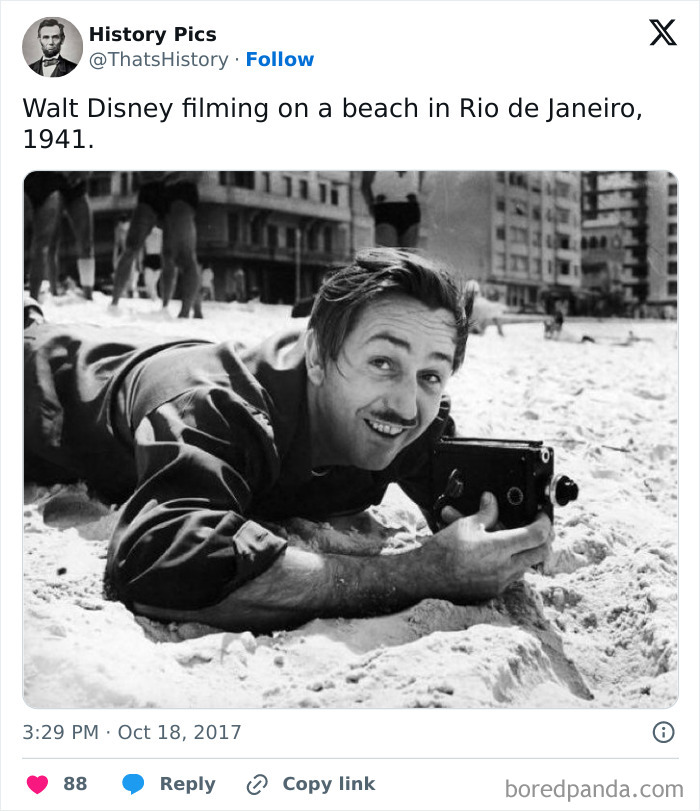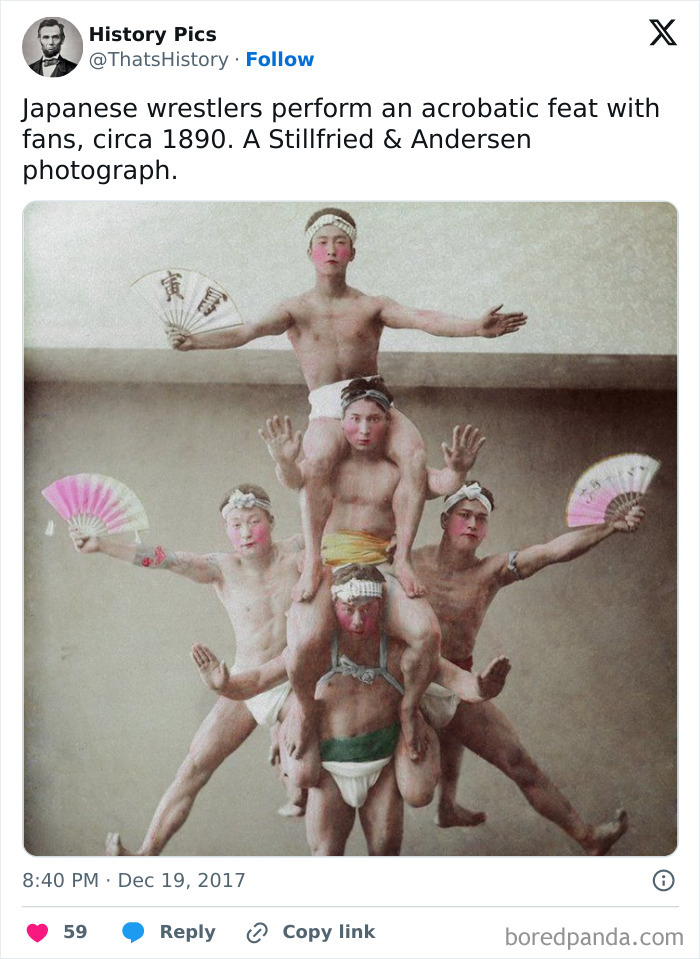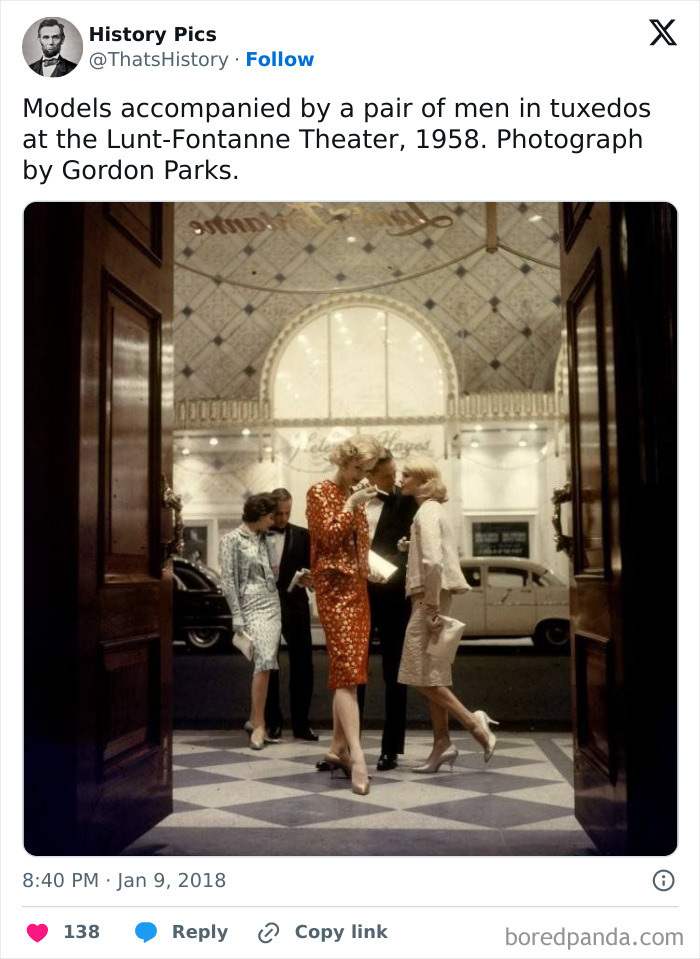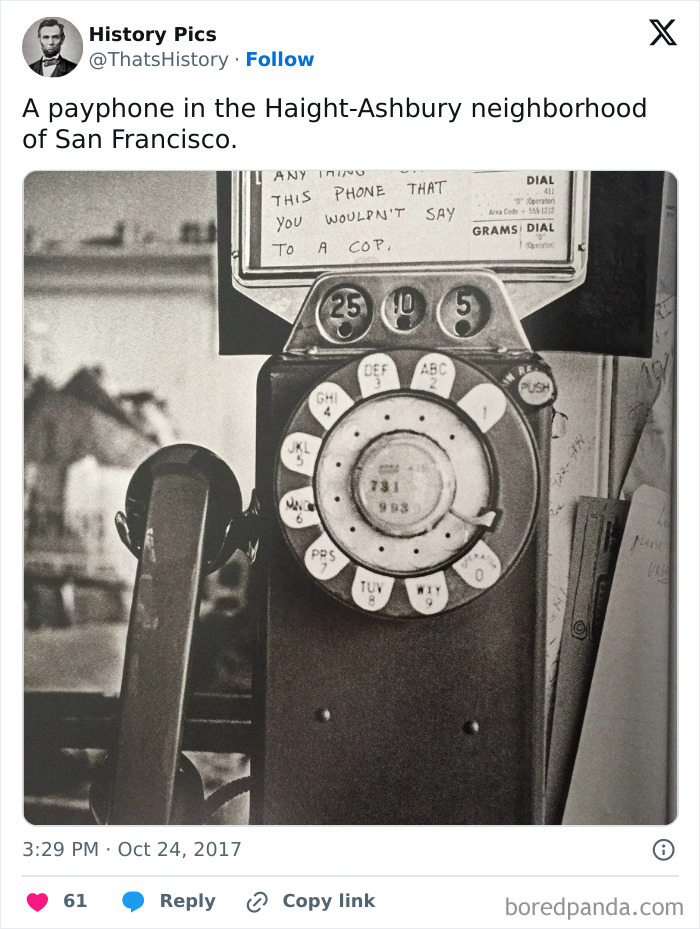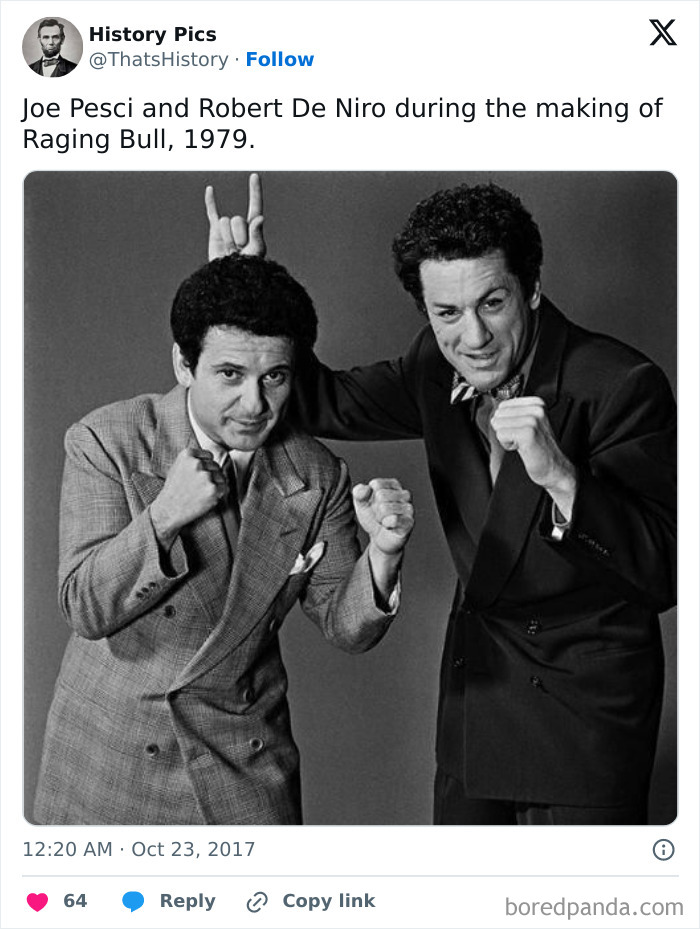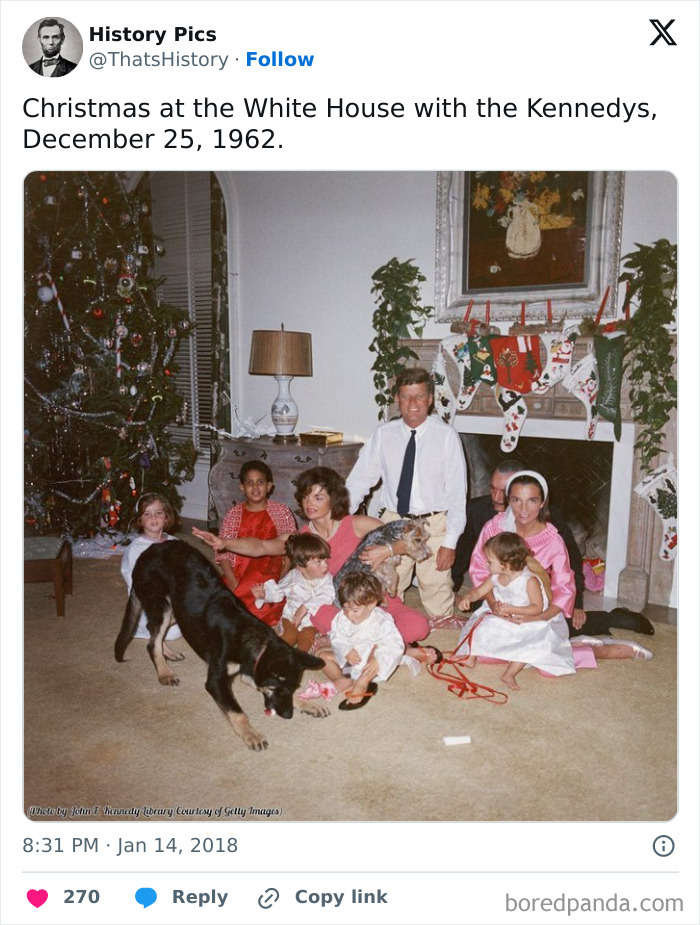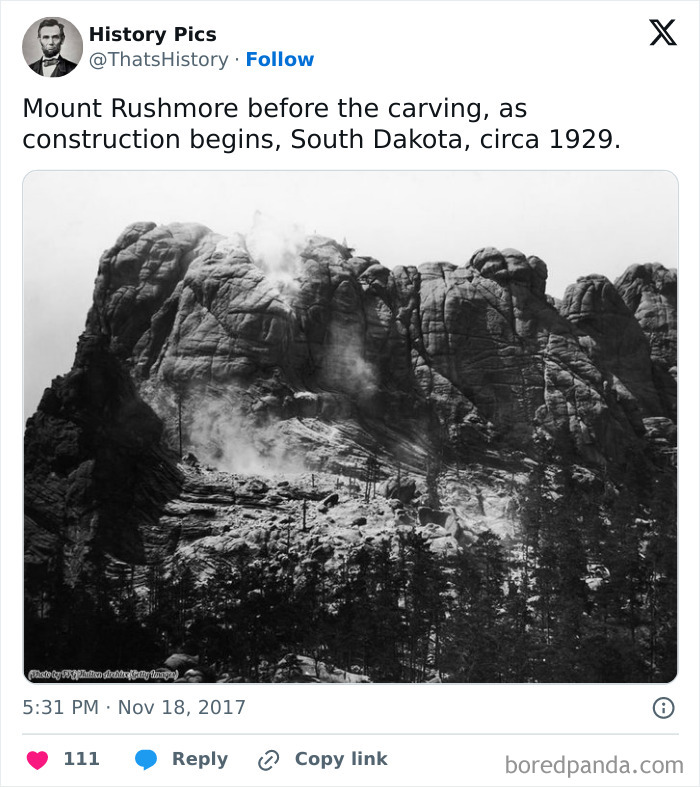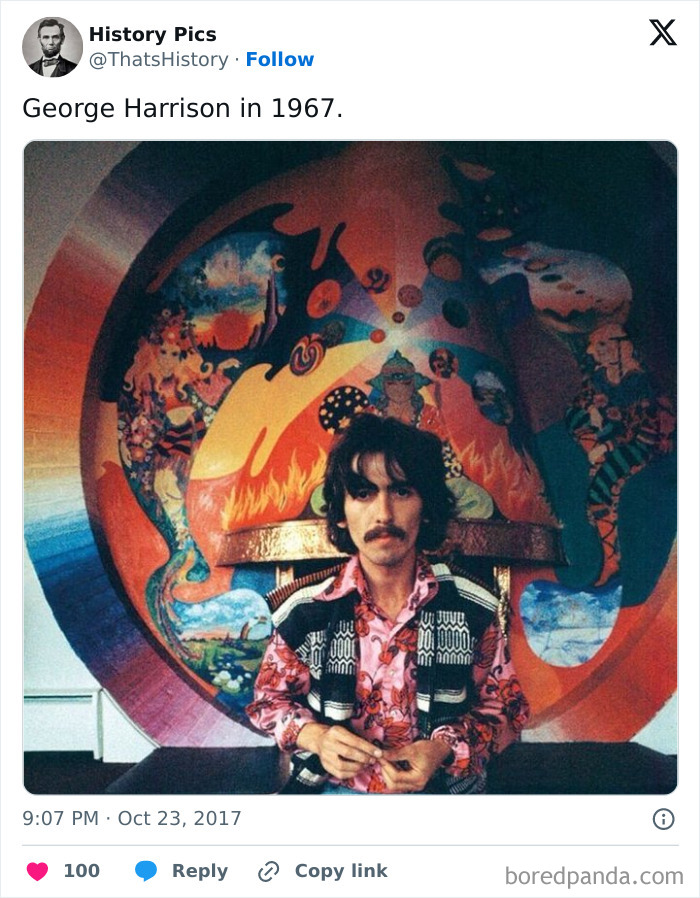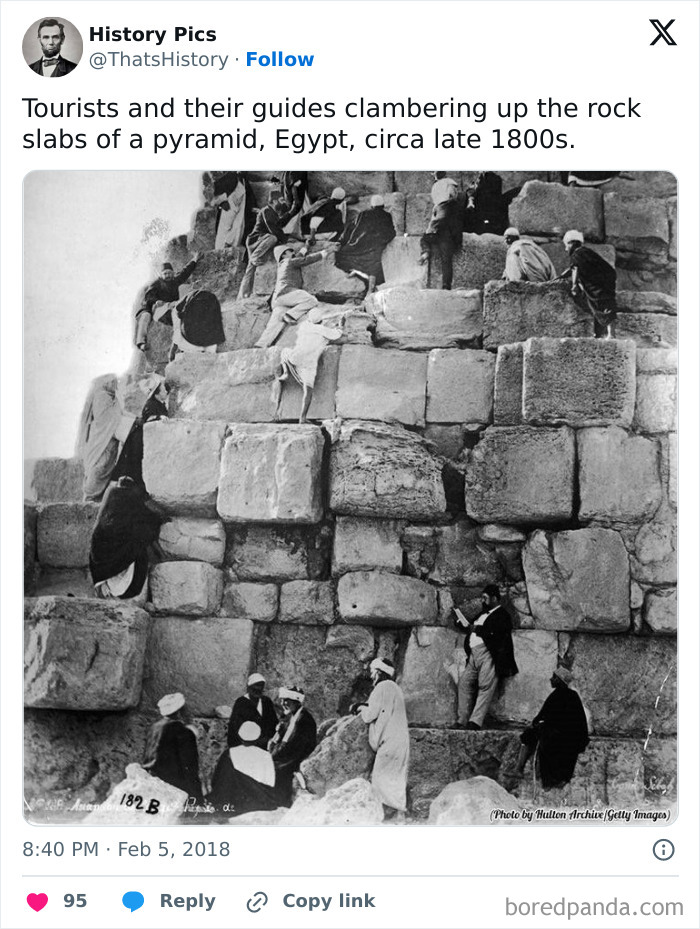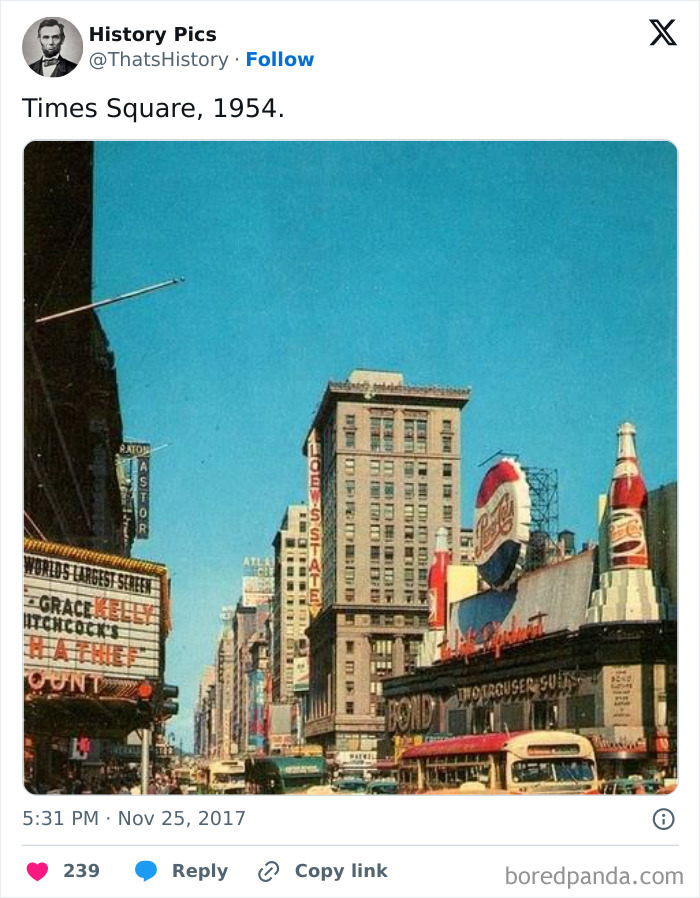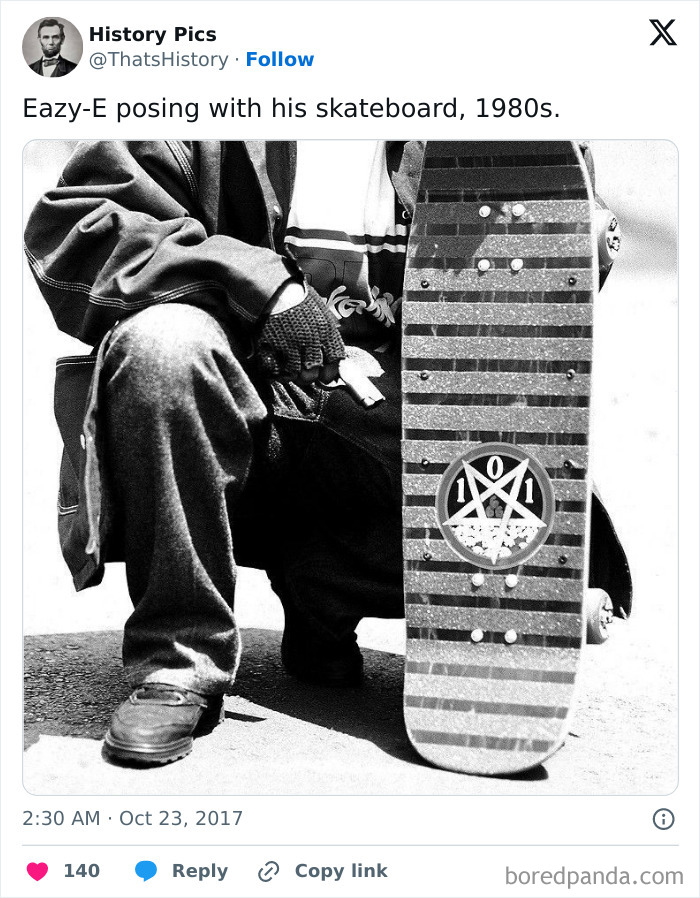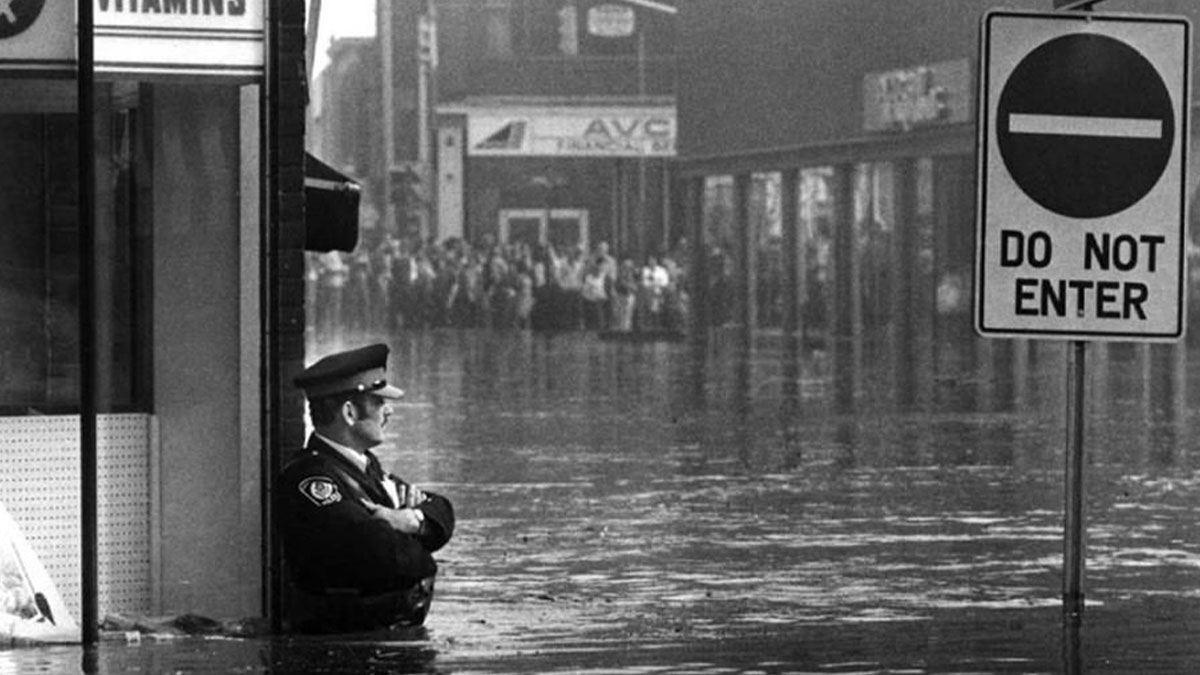
50 Interesting Historical Pics From “That’s History” That May Change Your Perspective On Things
Interview With ExpertIt's important that we keep being interested in history. Even if we laughed it off, one of the most viral memes of this summer was quite poignant: we do live in the context of all in which we live and what came before us.
The X page History Pics with its 220k fans helps us see what life was like before we were born. From photographs of regular folks in '70s bodegas to rarely-seen images of famous actors, writers, and historical figures, the page holds a mirror to all the context that came before us.
To discover why history is so important, Bored Panda reached out to Liz Covart. She's an award-winning historian of early America, the Founding Director of Colonial Williamsburg Innovation Studios at the Colonial Williamsburg Foundation, and host of the Ben Franklin's World podcast.
She kindly agreed to chat with us about why old photographs are important for a better understanding of history and shared some tips about how we can find little bits of history in our everyday lives.
This post may include affiliate links.
"Visual images like portrait paintings, prints, maps, and old photographs can help us understand what the world looked like in the past," historian Liz Covart tells Bored Panda. "This can be helpful as we read written records or listen to oral histories. As we read or hear a description, we can use these old images to visualize what the record and its author tell us."
However, Liz points out that we shouldn't always blindly trust all historical pictures and photographs. "Just like we curate images of our lives through the messages and photos we post on social media, so did the people of the past," she says.
Liz says that people would curate their image (literally!) long before photography became a thing. "People wealthy enough to have their portrait painted in the years before photography would discuss the pose they wanted to strike with their portrait painter."
She points to two portraits of Benjamin Franklin: Joseph Siffred Duplessis' 1785 portrait and the one by Robert Feke in 1747. In Feke's portrait, "Franklin wanted the world to see that he had made it by the age of 41," the historian says. "Franklin [is] dressed in a nice suit of clothes and a wig and stands in a dignified pose with a view of the Pennsylvania countryside. As a man of wealth and leisure, Franklin now had time to enjoy and invest in the countryside."
"With much help from his wife Deborah Read Franklin, Benjamin Franklin built the most successful printing business in eighteenth-century North America. At the age of 42, Franklin retired and started to pursue the scientific experiments that made him famous and his political career," Liz explains.
In Feke's portrait, Franklin wanted to appear as a successful 41-year-old businessman. In Duplessis' portrait, the image of Franklin is quite different – more modest. "[They] worked to capture the essence of a man who was a dignified and accomplished older statesman," Liz Covart says.
Covart says that the same goes for maps and photographs. "Cartographers created maps to project the on-paper power of empires," she points out. "If you look at an 18th-century map, you will see that these maps claimed far more territory than empires like France, England, the Netherlands, and Spain held in reality."
Photographers also have a message they want to convey. "If they photograph people, photographers want you to see the images [of] those people in the best light and with the message the photographer person(s) want their viewers to come away with. When photographers take photographs of places, they frame those places with a lens of what they want their viewer to see about those places."
"Like most historical sources, images of the past – just like images created in the present – are curated and mediated sources. These are sources that are crafted with a specific message in mind," the historian explains.
Liz Covart also talked to us about how important history and learning history is to us as people. "History tells us who we are and how we came to be, who we are as people, communities, states, and nations. If you have ever wondered why your community or neighborhood is the way it is today or why your family has evolved the way it has, history holds answers for you," Liz says.
Many of us don't realize that our family genealogy is history too. "Conducting research into your family and its origins often leads people to imagine how they lived, what it was like for them to leave their place of origin and move, and what it was like for them to live in the places they settled," Liz continues. "This leads people to seek out information about the past so they can truly understand the world of their ancestors."
History lives in places other than textbooks, too. Historian Liz Covart says that she brings history into her daily life by thinking about the past. "When it's cold out, and I am freezing and passing snow banks, I like to think about how good my life is compared to those who lived in early Boston," she says.
"After all, I have appropriate clothing, modern heating, and I have a shovel. I think about what it must have been like for early Americans who had wool clothing but had to keep a fire going to keep warm."
"Keeping a fire going meant early Americans would have had to cut or purchase wood, they would have had to tend the fire at all times, and they would have had to deal with the smell of fire and smoke permeating their homes, furniture, and clothing," Liz paints a picture of the old way of life. "Plus, the cold would have felt colder as early Americans lived through the Little Ice Age, another period of climate change."
Road trips, according to Liz, are great for looking for bits of history, too. All you need is a bit of imagination. "I like to look out the window and imagine what it was like to be a pioneer, someone who moved West with their family into a landscape that would have been far more wooded (at least before the Great Plains) than it is now," the historian says.
"I imagine trying to move during the winter because the roads of early America were either so bad or non-existent that those who moved West typically waited for winter when the roads and paths that did exist were frozen, when frozen rivers allowed for easy crossing, and when you could put blades on your wagon and haul your family and goods over the snow. This was a cold move but one that also allowed families to avoid getting their wagons stuck in mud."
"I also like to think about the Indigenous people these pioneers encountered," Covart continues. "The North American West did not consist of vacant lands. Indigenous peoples lived and cultivated these lands and lived there with their communities and societies."
So, you only need a little imagination and curiosity about life in the past if you want to think about history. "If you don't know what the world would have looked like in the past, visiting a historic site or museum, reading a history book, or listening to a history podcast like 'Ben Franklin's World' can help you find answers," Liz says.
Indeed, give a listen to 'Ben Franklin's World' if you like what you see on this list and are hungry for some more interesting bits of history!
Hey I had a pair of those, except they zipped up and were shorter in the leg. I wish I had kept them - they be a an antique collector's item now.
Load More Replies...No one’s smoking? I don’t think it’s fake, but that jumped out to me.
My sister wanted a white pair of go-go boots so bad!! I wanted a pair of Beatles shoes!
Yep. We really were that good. I had a fur jacket, Go-Go boots, and Beatle boots too! And that girl in the striped mini dress could have been me, I had a dress almost identical. We had the best gear, the best music and the best cars!!!
I love old photos. I am a true believer that if we don't learn from our past we are doomed to repeat it. I also have always said that computers are from the devil and the price tag on that first computer just proved my point.
Love these. They really werent that long ago. Shows how far we have come in a short time.
Don't post photos that crop out the top and the bottom of the picture. Makes me think that these are screenshots.
Does it really matter if it's just to illustrate historical moments and credit is given to the people who took the photo? Not downvoting you for asking, but since it's about the history and not a photo contest, I just don't think it matters.
Load More Replies...I love old photos. I am a true believer that if we don't learn from our past we are doomed to repeat it. I also have always said that computers are from the devil and the price tag on that first computer just proved my point.
Love these. They really werent that long ago. Shows how far we have come in a short time.
Don't post photos that crop out the top and the bottom of the picture. Makes me think that these are screenshots.
Does it really matter if it's just to illustrate historical moments and credit is given to the people who took the photo? Not downvoting you for asking, but since it's about the history and not a photo contest, I just don't think it matters.
Load More Replies...
 Dark Mode
Dark Mode  No fees, cancel anytime
No fees, cancel anytime 







